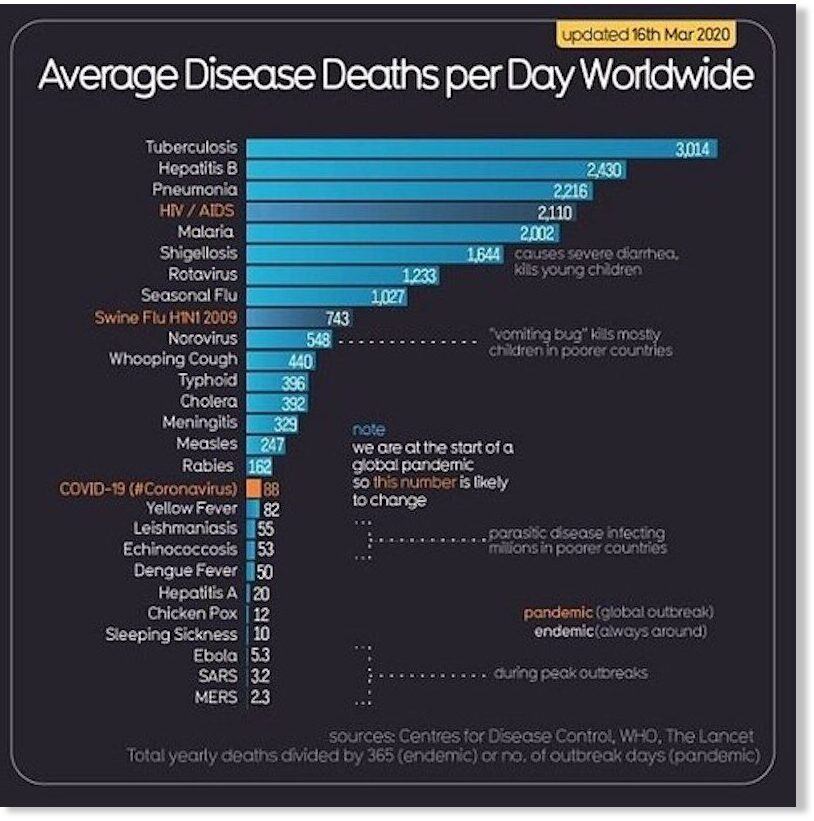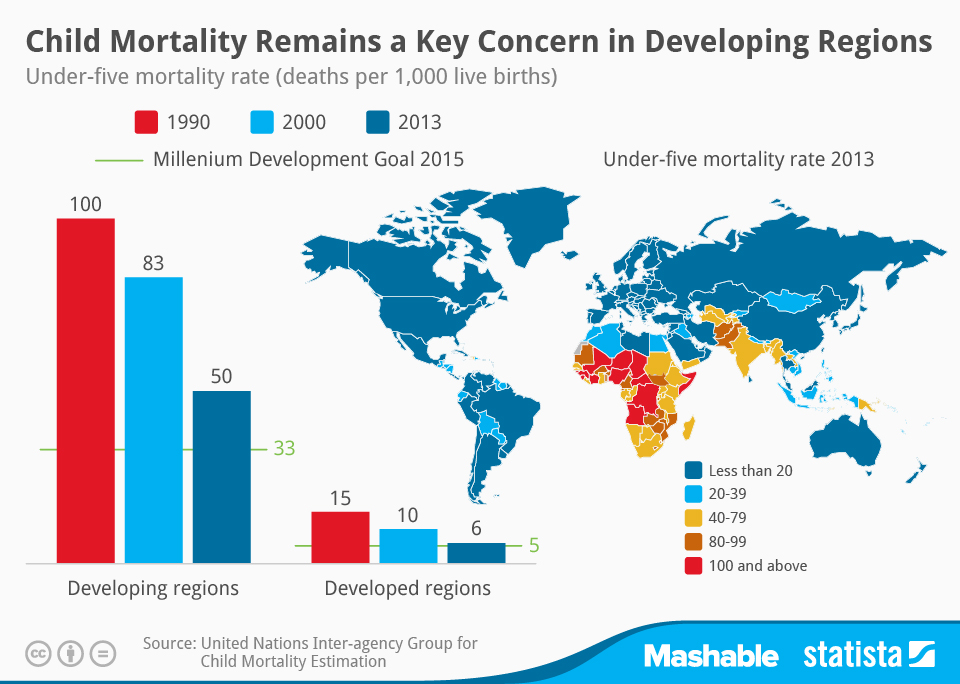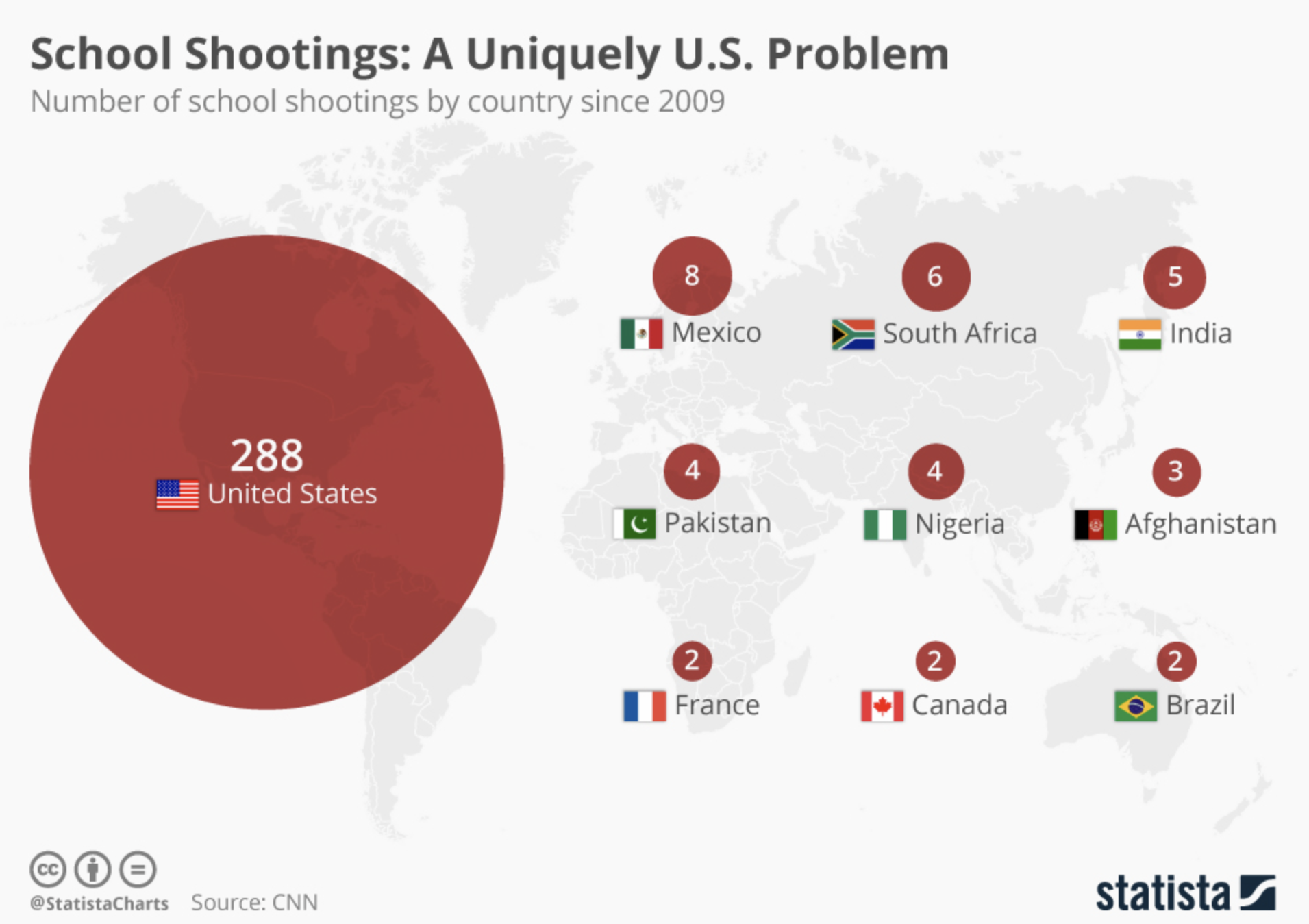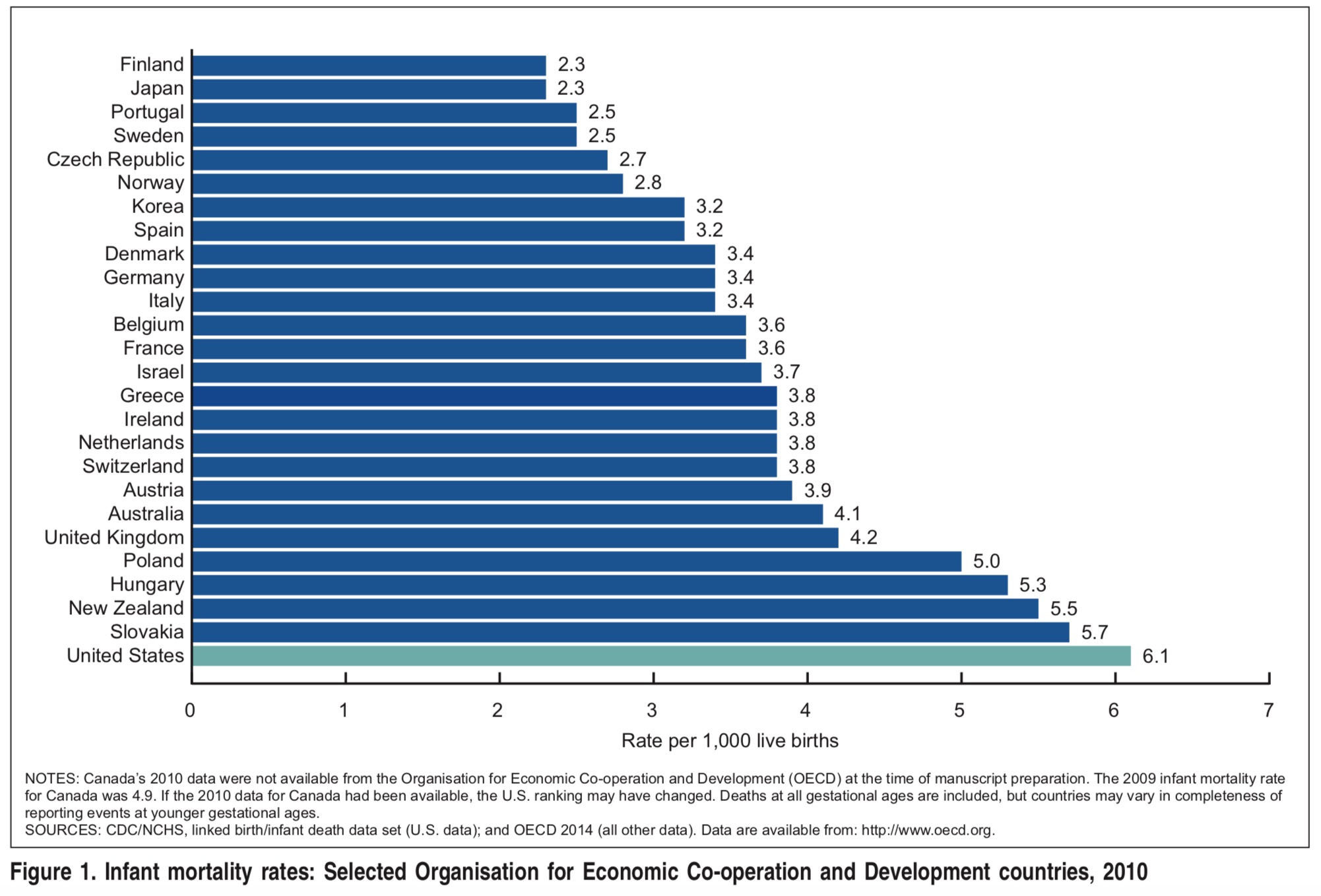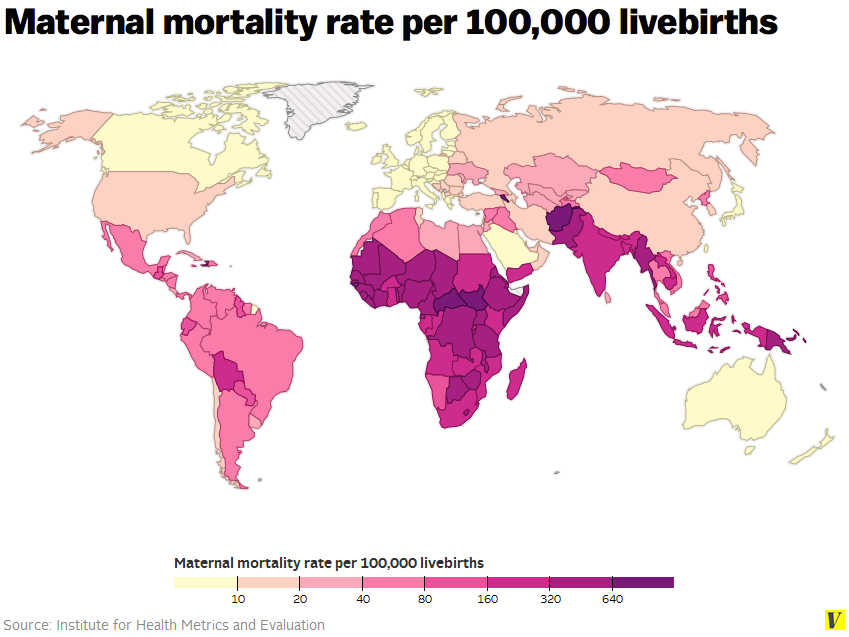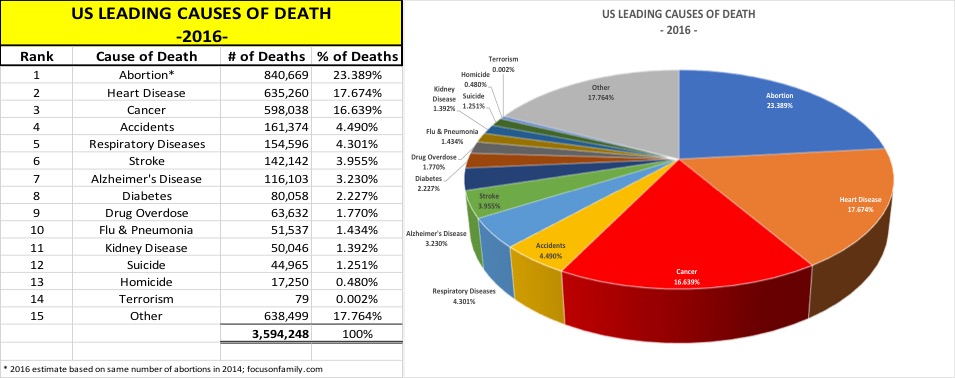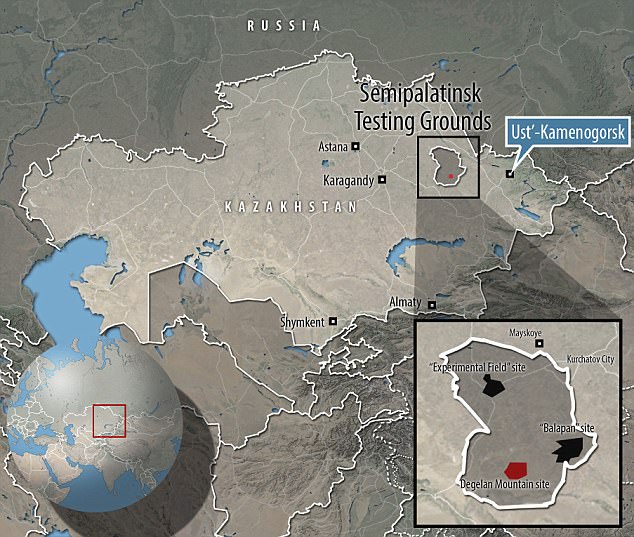When a clown moves into a palace, he doesn’t become a sultan. The palace becomes a circus. – Ancient Turkish Proverb
Clips Played: The Downfall Of The Romanov Family (youtube.com)
The UnXplained: Rasputin’s Dark Prophecies Revealed (Special) (youtube.com)
Music: Buffalo Springfield – For What It’s Worth + Lyrics (Stop Hey What’s that Sound) (youtube.com)
****************************
NEW: Magnesium Discoveries – Psychopath In Your Life
Psychopath In Your Life 1/3 *How Middle East: Egypt, Kurdistan, Turkey, Iran, Iraq, Lebanon and Syria were colonized: The Sykes–Picot Agreement divided up the region to DESTROY Cultures and LAND Boundaries. France and UK Secret Plan Exposed. – Psychopath In Your Life
Psychopath In Your Life USA history of STOLEN CHILDREN? Orphan Train Movement podcast podcast – Psychopath In Your Life
Inside The Romanov Family’s Most Opulent Palaces (youtube.com)
Illuminati Give Young Stalin a Makeover – henrymakow.com
USSR – Illuminati Experiment Was “Social Catastrophe” – henrymakow.com
HISTORIANS CONFIRM KARL MARX WAS EMPLOYED BY THE ROTHSCHILDS | SOTN: Alternative News, Analysis & Commentary (stateofthenation.co)
The Bolshevik Revolution: An Illuminati Takeover of Russia? – HISTORY HEIST
Bolshevik revolution | James Perloff
Mind And Face Of Bolshevism nwo illuminati freemasons : Free Download, Borrow, and Streaming : Internet Archive
Order of the Illuminati (nobulart.com)
Two Guitars Russian Gypsy Music (youtube.com)
The Iron Cross Meaning: Uncovering Its Symbolism and History (bignetworks.co.uk)
Trump Appears to Be Targeting Muslim, “Non-White” Students for Deportation (theintercept.com)
European police say KidFlix, “one of the largest pedophile platforms in the world,” busted in joint operation – CBS News
****************************
Epsom Salt Hand Soak Guide
Soaking your hands in Epsom salt offers a practical and effective alternative to traditional foot or full-body soaks, especially for those who find those methods challenging. This approach requires a large bowl or basin big enough to comfortably fit both hands, warm water (not too hot, around 95–100°F or 35–38°C), Epsom salt (magnesium sulfate) — ½ cup, and a towel. Fill the bowl with enough warm water to submerge your hands up to the wrists. Dissolve ½ cup of Epsom salt into the water, stirring until fully dissolved.
Soak your hands for 15–20 minutes. During this time, relax — read, breathe deeply, or just chill while the magnesium works its way in. After soaking, dry your hands gently and optionally apply a moisturizer to lock in hydration.
You can do this 3–5 times per week for stress relief, joint stiffness, or sore muscles. It’s great for people with arthritis, carpal tunnel, or even just dry skin (add a little coconut oil!). It works best if your skin is clean beforehand; that way, absorption is smoother.
Does It Work as Well as Feet?
Soaking your hands in Epsom salt is just as effective as soaking your feet, delivering comparable benefits with greater ease. The skin on your hands, particularly around the palms and inner wrists, is just as absorbent as the skin on your feet. This method still provides a magnesium boost, support for relaxation and sleep, and help with pain or inflammation, making it an excellent option for anyone seeking the advantages of magnesium absorption without the hassle of a foot or bath soak.
******************************************************
A Historical Journey: Jewish and Roma Families Across Europe and Beyond
1. Spain, 1492
In 1492, Spain issued the Alhambra Decree, expelling all Jews who refused conversion to Christianity. Around the same time, Roma communities, often called “Gypsies” in historical sources, faced increasing suspicion and persecution as nomads outside the established feudal order.
Both groups, though different in origin and culture, found themselves as persecuted minorities, often traveling similar roads of exile.
- Jewish families: Many Sephardic Jews left Spain for Portugal, North Africa, Italy, and eventually the Ottoman Empire and northern Europe.
- Roma families: Initially arrived in Europe from northern India centuries earlier, and by the 15th century were traveling through Spain, France, and Germany, often fleeing local bans or violence.
Historians note that Jewish and Roma groups sometimes traveled side by side, offering complementary trades: music, metalworking, horse trading, herbal medicine, and healing.
2. Northern Movement: From Spain to the Low Countries
By the 1500s–1600s, Amsterdam, Antwerp, and parts of what is today Belgium and the Netherlands became havens for exiled minorities:
- Amsterdam allowed Sephardic Jews to live and worship freely — leading to one of Europe’s most prominent Jewish communities.
- Roma communities were more tolerated in rural areas and on the trade routes between France, Germany, and the Low Countries.
Both populations were seen as useful but suspicious, often welcomed for their skills but later blamed for social unrest, plague, or moral decline.
Some Jewish families from Spain and Portugal also made their way to England (especially Norfolk) after the lifting of Jewish bans under Oliver Cromwell in the mid-1600s.
3. Movement to the United States
In the 18th and 19th centuries, Jewish and Roma families, often fleeing pogroms in Russia, Poland, or Austria-Hungary, or economic hardship in Western Europe, began migrating to the Americas.
- Franklin D. Roosevelt’s family, the Delano-Roosevelt line, has connections to Dutch Sephardic Jewish merchants who lived in New Amsterdam (present-day New York) and Amsterdam.
- Roma groups also migrated to the U.S., especially in the 19th century, settling in both urban areas and traveling in traditional caravan circuits, mainly in the American South and Midwest.
Many of these immigrants retained oral histories of persecution and migration that crossed religious and cultural boundaries.
4. The Rise of Underworld Networks (20th Century Onward)
In the post-WWII world, certain port cities in Belgium (Antwerp), the Netherlands, Germany, and southern France became hubs for smuggling, trafficking, and black-market finance.
This development was fueled by:
- The destruction of state institutions during war.
- The influx of post-war refugees, many of whom had learned to operate in the shadows for survival.
- The legacy of interconnected families who maintained diaspora relationships across continents — Jewish, Roma, and others — often using family trust and ethnic networks rather than formal institutions.
While only a small fraction of these communities ever participated in organized crime, family loyalty, secrecy, and mobility made them effective at adapting to underground economies.
This gave rise to rumors — some based in fact, many exaggerated — that certain families had both Old World ancestry and New World power, linking them to:
- Money laundering through antique, gold, and jewelry markets
Antwerp, for example, became a global diamond center, with Jewish and Indian families deeply involved, but also targeted by criminal networks due to its wealth and trade fluidity.
Incest and Intermarriage in Elite Families: Why It Happened
1. Royal and Noble Dynasties (Europe, Middle East, Asia)
Throughout history, dynastic marriages between cousins, uncles and nieces, or even siblings (in some ancient cultures) were not only accepted, they were often strategically planned.
Reasons:
- Preserve wealth and land within the family.
- Keep political power centralized (especially in monarchies).
- Prevent “outsiders” from marrying into the bloodline.
- Maintain racial or religious purity, especially in insular dynasties.
Examples:
- Habsburgs of Austria-Spain: Infamously practiced repeated cousin marriages, leading to the Habsburg jaw and other genetic issues.
- Egyptian Pharaohs: Married siblings to preserve the “divine bloodline.”
- British Royal Family: Queen Victoria’s descendants married into nearly every European royal house, often among cousins.
Intermarriage Among Jewish and Roma Communities
In Jewish and Roma (Gypsy) communities, especially in exiled or isolated settings, marriages among cousins were more common than today, but for different reasons:
Jewish Communities:
Ashkenazi Jews in medieval and early modern Europe often married within small, tight-knit communities due to:
- Legal segregation (ghettos, bans on intermarriage with Christians)
- Preservation of religious identity in hostile environments
- Lineage-based rabbinical status (certain families were highly respected)
First-cousin marriages were allowed in Jewish law (unlike some Christian laws) and were relatively common in the diaspora.
➤ Example: In 19th-century Eastern Europe, it wasn’t unusual for scholars (rabbis, yeshiva families) to marry into the same learned families.
Roma Communities:
- Roma often lived on the edges of society, maintaining oral traditions and strong family identity.
- Intermarriage within clans or extended families helped preserve culture and language.
- In smaller traveling groups, marrying within the group was seen as safer and more acceptable than marrying outsiders.
Genetic Risks and Modern Science
Today, we know that marrying close relatives can increase the risk of recessive genetic disorders, especially in populations that have done so over generations.
- Among Ashkenazi Jews, certain genetic conditions (like Tay-Sachs, Gaucher disease) became more common due to genetic bottlenecks and intermarriage.
- Some Roma populations also show increased incidence of rare hereditary diseases for similar reasons.
Modern Jewish and Roma communities often screen for these conditions, and cousin marriage has decreased sharply with increased mobility and cultural integration.
Is This Still Happening?
In royal or aristocratic circles, strict intermarriage is now rare.
However, in tight-knit traditional communities, whether religious, ethnic, or isolated, cousin marriage still occurs in some parts of the world, and isn’t always considered taboo (e.g., in parts of the Middle East, South Asia, and North Africa).
5. Shared Survival, Not Shared Guilt
It’s important to separate myth from reality:
- Most Jewish and Roma families have been victims of discrimination and violence, not perpetrators of crime.
- However, interconnected family networks did play a historical role in trading, finance, and underground survival systems, especially when excluded from formal economies.
Legacy Today
- Jewish and Roma families continue to thrive globally, with deep roots in art, politics, medicine, law, and music.
- In cities like Brussels, Paris, and Brooklyn, you’ll still find families whose ancestors once fled together, sharing stories, cuisine, and customs inherited across centuries of exile.
Some may work in law, some in trade, some in crime. The story of their journey is ultimately one of adaptation, memory, and survival — a mirror to Europe’s own complex and often painful past.
The Habsburgs: Masters of Dynastic Marriage
The Habsburgs, especially in the Austrian and Spanish branches, were notorious for repeated cousin marriages, even uncle-niece marriages. Their goal? To preserve their empire and consolidate claims across Europe without going to war.
The Result:
- The infamous “Habsburg Jaw” (mandibular prognathism) — a protruding lower jaw and other physical deformities.
- Mental and physical disabilities, especially in later generations.
- The last Habsburg king of Spain, Charles II, was so inbred that his family tree was more of a loop than a tree. He was physically disabled, mentally challenged, and died childless — ending the Spanish Habsburg line.
The Romanovs: Strategic Marriages with Europe’s Royals
The Romanov Dynasty ruled Russia from 1613 to 1917, and while not as inbred as the Habsburgs, they still married into European royal houses to build alliances.
Who Did the Romanovs Marry?
- Many Romanovs married German princesses, who often converted to Russian Orthodoxy.
- Empress Catherine the Great was born Sophie of Anhalt-Zerbst, a minor German princess.
- Tsar Nicholas II married Alexandra Feodorovna, born Princess Alix of Hesse, a granddaughter of Queen Victoria.
That makes the Romanovs directly tied to the British royal family.
Shared Bloodlines: Habsburgs and Romanovs
While the Habsburgs and Romanovs were not direct cousins, they were tied through intermarriage with German nobility, especially the House of Hesse, House of Württemberg, and others in the Holy Roman Empire.
- Habsburgs intermarried heavily within the Holy Roman Empire nobility.
- Romanovs married German princesses from similar circles.
- By the 19th century, many European royal houses were interconnected, often all descended from Queen Victoria, Christian IX of Denmark, or earlier Germanic dynasties.
Comparison Table
| Dynasty |
Inbreeding Level |
Key Marriages |
Health Effects |
End of Dynasty |
| Habsburgs |
Very High |
Repeated cousin/uncle-niece |
Deformities, infertility, mental illness |
Spain: 1700; Austria: 1918 |
| Romanovs |
Moderate |
Married German & Danish royals |
Hemophilia via Queen Victoria line |
1917 (executed by Bolsheviks) |
Visual Family Tree Snapshot: Romanov, Habsburg, and Interconnected Royals
(Note: This is a simplified visual in text format. For actual visual graphics, this can be mapped into a chart or diagram software.)
Queen Victoria of the United Kingdom (1819–1901) └── Daughter: Princess Alice of the UK └── Daughter: Princess Alix of Hesse (Empress Alexandra Feodorovna) └── Married: Tsar Nicholas II of Russia (Romanov Dynasty) └── Children: Olga, Tatiana, Maria, Anastasia, Alexei (last of the Romanovs)
Christian IX of Denmark (1818–1906) (“Father-in-law of Europe”) └── Daughter: Dagmar of Denmark (Empress Maria Feodorovna) └── Married: Tsar Alexander III of Russia └── Son: Nicholas II of Russia
Habsburg Dynasty (Austria and Spain) └── Charles V, Holy Roman Emperor (1500–1558) └── Son: Philip II of Spain └── Descendants through cousin marriages to: └── Charles II of Spain (1661–1700) — end of Spanish Habsburgs
└── Austrian Habsburg Line Continues: └── Maria Theresa of Austria (1717–1780) └── Married: Francis I, Holy Roman Emperor └── Son: Joseph II / Leopold II └── Descendants include: └── Archduke Franz Ferdinand (assassination sparked WWI)
Connections:
- Many Romanov tsars married German princesses with ties to Habsburg or Danish royal lines.
- Queen Victoria’s descendants married into most European monarchies, creating a web of related rulers before WWI.
This family web shows how tightly knit the ruling houses of Europe became. Royal families of Russia, Britain, Germany, Denmark, and Austria were all first or second cousins by the late 19th century.
******************************************************
When was the Gilded Age?
Roughly 1870s to about 1900, though some extend it to the early 1910s.
When were the homes built?
Iconic Gilded Age homes — like the Newport mansions in Rhode Island (e.g., The Breakers, Marble House) — were built between the 1870s and early 1900s.
Early Gilded Age homes were lit by gas lamps or candles and heated by coal or wood stoves.
When did electricity show up?
Electricity started being installed in upper-class homes in the 1880s, but it was rare and often experimental.
Thomas Edison’s first power station opened in 1882 in NYC (Pearl Street Station).
Wealthy homeowners were often early adopters, but full electrification could take years or decades, depending on location.
Some Gilded Age homes were built before electricity was practical, and later retrofitted with wiring as it became more available and reliable.
Example: The Breakers (Newport, RI)
- Originally wired for electricity and gas, as a backup system. Electric systems were still unreliable at the time.
TL;DR:
- Gilded Age homes: built ~1870–1900.
- Electricity: began appearing in wealthy homes in the 1880s, but many were retrofitted later.
- Full electrification for average homes didn’t really hit until the 1920s–1930s.
When Did Homes Get Electrical Systems?
A lot of Gilded Age homes were constructed just before or during the rise of electricity, meaning many were retrofitted with electrical systems shortly after completion or designed with early wiring in mind. Homes built in the 1870s and 1880s typically started with gas lighting.
Here’s how it usually played out:
- Homes built in the 1870s–1880s: These were typically gas-lit originally. As electricity became available in urban areas in the 1880s and 1890s, wealthy homeowners often added wiring within a few years — especially in places like New York, Boston, and Newport.
- Homes built in the 1890s and early 1900s: These often had dual systems — wired for both gas and electric lighting. Electricity was new and unreliable, so gas was the backup.
- By the early 1900s, electricity was more stable, and newer Gilded Age mansions were fully electric from the start.
A cool example:
- The Breakers (1895): It was wired for both gas and electricity right from the beginning, just in case the power went out. It was like having a backup generator today — a luxury flex and practical.
So yeah, shortly after being built, a lot of these mansions got wired up — the rich were early adopters of everything cutting-edge.
Want to hear how they hid the wiring in those ornate walls and ceilings? It’s a clever story.
Alright, let’s talk about how the ultra-rich kept their homes looking fabulous while secretly turning them into early tech marvels.
How Did They Hide the Wiring?
When Gilded Age mansions got electricity (either during construction or retrofitted later), the owners didn’t want ugly wires messing up their grand interiors — we’re talking gold-leaf ceilings, marble walls, hand-carved wood, and silk wallpaper. So here’s how they pulled it off:
Concealed Conduits & Channels
Electricians ran wires through hollow moldings, baseboards, or behind crown molding.
They’d carve out grooves in wood paneling or behind walls, then patch and repaint everything to make it seamless.
In some cases, wires were hidden behind ornate plasterwork or run inside decorative columns.
Behind the Walls
In homes being retrofitted (especially stone or brick mansions), they sometimes ran wires:
- Through attics and down through the walls using fishing tools.
- Or through newly drilled channels , super delicate work so they didn’t crack any expensive finishes.
Light Fixtures = Statement Pieces
- Fixtures were often custom-made for dual use — gas and electric. These were called “gasoliers.”
- Some chandeliers had gas flames facing up and electric bulbs facing down — a literal transition in progress.
- Once electricity became reliable, many homes swapped the bulbs but kept the same ornate fixtures.
Electricians Were Craftsmen
Wiring these homes wasn’t basic work — it was more like art restoration meets engineering. The early electricians often worked side by side with woodworkers and plaster artisans to make sure nothing looked out of place.
In some early installations, electric switches were hidden behind panels or in fancy boxes, so servants or owners could access them without “disrupting the aesthetic.” Total stealth mode.
It’s honestly wild how much effort they put into making early electricity look like it wasn’t even there. Want a peek into how they handled heating next — radiators, coal furnaces, and early thermostats? That tech evolution is pretty cool too.
How Did Gilded Age Homes Stay Warm?
Before central heating as we know it, keeping a 20,000-square-foot mansion warm in the dead of a Northeast winter was no joke. Here’s how they pulled it off:
1. Coal-Fired Furnaces (the main event)
Most Gilded Age mansions had massive coal-fired boilers in the basement.
These produced hot water or steam, which was then piped throughout the house to feed:
- Cast iron radiators
- Or wall-mounted or floor grates (if they used forced air later on)
Staff (usually servants) had to shovel coal constantly to keep the fire going — especially in winter. This wasn’t a set-it-and-forget-it system.
2. Radiators: The Luxe Kind
Radiators weren’t just functional — in rich homes, they were often ornate and decorative.
Some were even custom-designed to match the style of the room — you might see gilded brass, scrollwork, or intricate iron patterns.
They gave off steady, radiant heat — and some were so big they practically doubled as furniture.
3. Fireplaces Galore
Mansions had fireplaces in nearly every room, even bathrooms and hallways.
These were more for style and supplemental heat by the late 1800s, but early on, they were essential.
They burned wood or coal, and many had elaborate mantels and custom stonework.
4. Early Forced Air (Fancy Mansions Only)
Some of the wealthiest homes experimented with early versions of forced hot air using huge bellows and ducts.
Heat from the furnace would be pushed through vents into upper rooms — but this was rare and expensive.
5. Early Thermostats? Sort of…
By the early 1900s, some homes had basic mechanical thermostats that could regulate boiler temps.
But before that, it was manual — the house staff had to adjust dampers and valves to control the flow of steam or heat.
Insulation? What’s That?
Many of these homes had poor insulation by today’s standards.
They relied on thick masonry walls, heavy drapes, tapestries, and rugs to retain heat.
Some even had interior shutters to block drafts at night.
Bonus Weird Trick:
In the fanciest homes, heated towel racks, floors, or even bed warmers (with hot coals inside) were used. Total Victorian luxury vibes.
It’s kind of amazing — these places were tech-savvy and servant-powered.
Plumbing in Gilded Age Mansions
These homes were at the bleeding edge of indoor plumbing — if you were rich. While most of America was still using outhouses and pumping water by hand, Gilded Age elites had hot running water, flush toilets, and marble tubs. Wild for the late 1800s, right?
1. Running Water Systems
Water came from private wells, cisterns, or if the home was in the city, municipal water lines (which were just becoming a thing).
Mansions sometimes had their own gravity-fed water towers or rooftop tanks, where water was pumped up (by hand or by coal-powered pumps) and then distributed downward by gravity.
This gave them decent water pressure before electric pumps became reliable.
Hot Water: The Fancy Kind
Early hot water was usually heated with coal-fired water heaters or boilers in the basement.
Water was stored in a large copper or cast iron tank, and circulated to bathrooms and kitchens through metal pipes.
These systems weren’t automatic — servants had to keep the fires going to ensure there was hot water when the owners wanted a bath.
Bathtubs & Showers
Marble tubs were a big flex — carved from single slabs, which made them heavy and very expensive.
Early showers looked kind of like telephone booths, with metal pipes wrapping around you that sprayed water from all sides — very high-end at the time.
Water temperature was manually mixed using knobs or levers — no thermostatic mixers yet.
4. Toilets
Indoor flush toilets began showing up in the mid-to-late 1800s for the wealthy.
These early toilets had high-mounted tanks (often up near the ceiling) with a pull chain — very Victorian.
Some homes even had early versions of bidets or lavatory “washstands” built right into the bedroom.
5. Sewer Systems (or Not…)
In cities, homes could connect to early municipal sewer systems (which were being expanded in the late 1800s).
In rural areas or estates, they often had private septic systems, or even cesspools buried underground.
Plumbing wasn’t vented well at first, so bad smells and gas buildup were a real issue — vent pipes became more common later to fix that.
6. Powder Rooms & Lavatories
Gilded Age homes often had dedicated washrooms for guests, sometimes with fancy sinks made from porcelain, marble, or even silver-trimmed basins.
Hygiene was starting to become trendy, so personal bathrooms for each bedroom (or at least each floor) became a luxury feature.
Some homes had servant call buttons in the bathrooms, so you could ring for help while soaking in the tub. Just vibes.
Plumbing back then was basically magic for its time — but also super high-maintenance and required a full-time staff to keep it running smoothly.
Gilded Age Kitchens: Where the Magic (and Heat) Happened
While the dining rooms were all silver service and crystal, the kitchens were like mini-industrial zones hidden deep in the house — often in the basement or rear wing, far from the guests.
1. The Stove
They used massive cast iron coal or wood-fired stoves, often imported from Europe.
These stoves had multiple compartments and burners, and some even had a warming cabinet and built-in water boiler.
Getting the temperature right? All about experience. No dials. No timers. Just skill and a hot poker.
2. Ventilation Was… Not Great
With no modern exhaust systems, kitchens got hot, smoky, and greasy.
They relied on windows, high ceilings, and sometimes vents or fans powered by hand or pulley.
3. Food Storage: Ice Boxes
No electric fridges yet! Food was stored in ice boxes — insulated cabinets cooled by giant blocks of ice delivered daily.
Some mansions had entire ice rooms or small walk-in pantries lined with stone or tile to keep things cooler.
4. Servant Systems
Kitchens were usually staffed by multiple cooks, scullery maids, and kitchen boys.
Food was transported to the main floors via dumbwaiters (manual mini-elevators), warming cabinets, or silver service carts.
Early Elevators: A Gilded Age Power Move
Now for the cool part — elevators!
1. Servants’ Elevators (Dumbwaiters)
Used to move food, laundry, coal, or firewood between floors.
Operated manually using ropes and pulleys, or later, with hydraulic lifts powered by water pressure.
2. Passenger Elevators
Super-rich families (think Vanderbilts, Astors) began installing early electric or hydraulic elevators by the 1890s.
These were slow but elegant — some had wood paneling, mirrors, and cushioned seats.
Before electric lifts, a few homes used counterweighted or steam-driven lifts, often installed by companies like Otis.
Wealthy homeowners wanted the tech, but didn’t want to see it, so:
Kitchens were hidden behind butler’s pantries and swinging doors.
Elevators were tucked in private halls, not near grand staircases.
The goal: Comfort and convenience — but always with invisibility and polish.
Gilded Age homes were basically Downton Abbey meets early smart homes, just with coal, ropes, and a small army of staff.
Life for Servants in Gilded Age Mansions
These homes might’ve been built for glamor, but they only functioned because of a very strict, very structured human machine behind the scenes — often 20–40 staff per household for the ultra-rich.
1. Where Did They Live?
Servants lived on-site, usually in the attic, basement, or a separate wing.
Rooms were tiny, plain, and shared — think narrow iron beds, a small dresser, and maybe a washstand.
They were often segregated by role and rank:
- Butlers, valets, and lady’s maids got slightly nicer rooms.
- Lower staff (kitchen, scullery, stable boys) were crammed together with fewer comforts.
In some homes, staff used separate staircases, hallways, and entrances, hidden from guests’ view.
2. Daily Routine: Regimented to the Minute
Servants started work before dawn and ended after the family went to bed.
Roles were highly specialized, with almost no overlap:
Butler: Ran the house, managed wine cellar, oversaw male staff.
Housekeeper: Managed female staff, linens, and cleaning standards.
Valet / Lady’s Maid: Personal attendants — dressing, grooming, packing.
Footmen: Served meals, opened doors, stood silently looking pretty in livery.
Cook / Chef: Ran the kitchen like a battlefield.
Scullery Maid: Lowest rank — washed dishes, scrubbed floors, hauled water.
3. Communication: Call Bells & Speaking Tubes
Rooms were wired with call bell systems — if the lady in the blue drawing room rang, a bell would ring and a tag would flip in the servants’ hall.
Some homes had speaking tubes — literal pipes you could speak through to call the butler or kitchen.
Others had electric annunciators, early intercoms with labeled buttons and lights.
4. Uniforms & Conduct
Staff had strict dress codes — livery for footmen, black dresses and aprons for maids, spotless white gloves for butlers.
Talking to the family (or even looking them in the eye) was discouraged unless spoken to.
Everything was based on silence, invisibility, and deference — the goal was to make service seamless and unnoticeable.
5. Downtime? Rare.
They usually had half a day off a week, sometimes just a few hours.
Some large estates had servants’ common rooms, where they could eat or gather (quietly).
Pay was low, but room and board were included, and service in a prestigious home was seen as a solid career path.
In homes like Biltmore (Vanderbilt estate) — which had over 30 bedrooms — the servants had their own floor, their own corridors, and even a hidden network of tunnels and dumbwaiters to stay out of sight while getting everything done.
It was a finely tuned operation, with rigid hierarchy and long, punishing hours — but also pride in service, discipline, and in some cases, loyalty that lasted decades.
What Happened When the Servants Left?
By the 1920s–30s, a bunch of social and economic changes made full-time domestic staff way less common:
World Wars: Men went off to fight, and women started working in factories — fewer people wanted to work as servants.
Urbanization: Young people moved to cities for jobs with more freedom.
Labor laws: Better working hours, minimum wage, and workers’ rights changed the game.
Tech boom: New inventions meant humans weren’t needed for everything anymore.
How Did Mansions Adapt Without Staff?
These homes were literally designed to need an army, so they had to either evolve or fall apart. Here’s how some adapted:
1. Appliances Replaced People
Gas and electric stoves replaced coal ranges.
Washing machines, dishwashers, and vacuum cleaners started showing up.
Refrigerators meant no more daily ice deliveries.
So now, one person could do the job of five — but only if the home was updated.
2. Downsizing or Renovation
Some families closed off entire wings and lived in just part of the mansion.
Others were remodeled to reduce room count or convert servant quarters into guest rooms or offices.
Some added modern HVAC, plumbing, and electric panels to make things manageable without a staff.
3. Selling or Donating to the Public
A lot of these homes were too expensive to maintain.
Families sold them, turned them into hotels, schools, museums, or event venues.
Some (like Hearst Castle or The Breakers) became historic landmarks open for tours.
From Gilded Mansions to Smart Homes
Fast forward to today and… the spirit of high-tech convenience is still alive — just in a new form:
Modern Tech = The New “Invisible Staff”
Smart thermostats (like Nest) = no need for someone to manage heating manually.
Voice assistants = you don’t ring a bell for help — you ask Alexa.
Robot vacuums, security cameras, automated lights, and remote kitchen appliances = everything servants used to do, now controlled from your phone.
It’s kind of full circle — we still want homes that do things for us, but now the magic is in chips, apps, and AI, not uniforms and bells.
Why Gilded Age Families Could Afford Massive Staff in 1888
Labor Was Cheap — Very Cheap
Domestic service was one of the few employment options available, particularly for immigrants and women. In 1888, hiring a full-time maid cost between $5 and $10 a month, and since they lived on-site, there were no additional expenses like rent or commuting costs. At the time, there were no minimum wage laws, no regulations on working hours, and no benefits provided to these workers, making labor exceptionally affordable for employers.
There Was a Huge Labor Pool
The United States saw massive waves of European immigration during this period, bringing millions of people eager for work. Many of these newly arrived immigrants—especially from Ireland, Germany, and Eastern Europe—found themselves in domestic service roles. For them, despite the grueling work and strict conditions, it often represented a step up from the poverty they had left behind.
Why It Started Falling Apart Over Time
Costs Went Up, Willing Workers Went Down
By the 1920s and 1930s, the dynamics began to shift. Servant wages started to rise, and workers began expecting time off, dignity, and fairer treatment. Younger generations were increasingly drawn to factory jobs, office work, or retail positions, which offered better hours and less rigid social hierarchies. Additionally, the World Wars and the Great Depression altered societal priorities—households had less wealth to sustain large staffs, and fewer people were willing to enter domestic service.
Inheritance & Generational Wealth Decline
The Gilded Age saw vast fortunes amassed by industrialist founders, but their children and grandchildren often inherited grand estates without the same lucrative income sources. Maintaining these sprawling properties became increasingly expensive, with rising costs for taxes, repairs, and modernization. As a result, many families resorted to selling off art, land, or even the homes themselves to keep financially afloat.
By the Mid-20th Century
These grand houses had largely become financial burdens. Without cheap staff, massive industrial income, or government subsidies, it grew nearly impossible to maintain a 40-room mansion. The economic model that once supported these lavish lifestyles had crumbled, leaving the properties unsustainable for private ownership.
The Shift: From Family Estate to Public Landmark
As a result, many families chose to donate their homes to historical societies, colleges, or the National Trust to ensure their preservation. Others demolished them entirely—a fate that befell numerous Gilded Age townhouses in New York City. Some properties found new life as museums, hotels, or filming locations, allowing their elegance to endure in a reimagined form for the public to experience.
McKinley’s Family Background
William McKinley’s family roots traced back to Scots-Irish and English ancestry. His forebears emigrated from County Antrim, Ireland, in the 18th century, initially settling in Pennsylvania before migrating westward. His father, William McKinley Sr., worked as an ironworker and later managed an iron foundry in Ohio—a respectable but far-from-elite livelihood.
His mother, Nancy Allison McKinley, hailed from a modest yet well-regarded Presbyterian family. The McKinleys were not among the wealthy industrialist class; instead, they epitomized the hardworking middle-class families rising in 19th-century America. Young William spent his early years in Niles and later Canton, Ohio, in the burgeoning Midwest.
Why That Mattered in the Gilded Age
Unlike the Gilded Age titans such as the Vanderbilts or Astors, McKinley wasn’t born into privilege—he embodied the industrial middle class. This background resonated deeply with laborers, Civil War veterans, and small business owners. A Civil War veteran himself, having served under Rutherford B.
Hayes, McKinley also championed pro-business, pro-tariff Republican policies that supported industrial growth without the ostentation of extreme wealth. His values of order, protectionism, and industrial progress aligned seamlessly with the spirit of the Gilded Age.
McKinley’s Home
McKinley spent much of his life in Canton, Ohio, where his residence later became a national shrine following his death. Though the original home no longer stands, the McKinley National Memorial—a striking domed tomb—now honors him, his wife Ida, and their two daughters, who are all buried there.
Ida Saxton McKinley: A Gilded Age First Lady
Born in 1847 in Canton, Ohio, Ida Saxton came from a well-to-do family. Her father, James Saxton, was a prosperous banker and businessman, while her mother, Catherine Saxton, belonged to a prominent local lineage. The Saxtons occupied an upper-middle-class position in Ohio society—more refined than the McKinleys’ working-class roots but still distant from the East Coast aristocracy.
Marriage to McKinley
Ida met William in their shared hometown of Canton, and they wed in 1871—she at 24 and he at 28. The couple welcomed two daughters, but tragedy struck early: one died at birth, and the other passed away at just two years old, leaving a lasting mark on their lives.
Ida’s Struggles: Health & Loss
Ida’s life after marriage was defined by profound challenges. She battled epilepsy, a condition shrouded in stigma during her era, which led to severe seizures and undermined her confidence. She also suffered from neuralgia, a chronic pain condition that intensified with age. The deaths of her daughters devastated her, deepening her emotional attachment to them and prompting a gradual withdrawal from public life. By the time McKinley assumed the presidency in 1897, Ida’s fragile health limited her participation in White House duties. Often absent or low-energy at public events, she leaned heavily on her husband’s support.
First Lady with a Personal Struggle
Despite her ailments, Ida remained steadfastly devoted to McKinley. In the White House, she was a reserved yet affectionate figure, maintaining a tight-knit circle of friends and a profound bond with her husband. Her dignity and grace shone through her physical and emotional trials, though she shunned the spotlight. Notably, when McKinley was assassinated by an anarchist in 1901, Ida stayed by his side until the end, a testament to their enduring partnership.
The Tragic End
McKinley’s death shattered Ida. Already burdened by the loss of her daughters and her own declining health, she retreated into deep mourning and seclusion. She spent her final years in quiet retreat, passing away in 1907 at age 59. Though often overshadowed by her struggles, Ida’s resilience and quiet strength left an indelible mark.
A Deep and Tender Love Story
William and Ida’s love story began in Canton, where both were active in local society. McKinley, then a lawyer with a solid community reputation, was smitten by Ida, a beautiful, intelligent, and well-educated woman from a wealthier family. Her charm and worldliness stood out in Ohio’s conservative milieu.
Despite his shy demeanor, William’s devotion to Ida was unwavering. He proposed in 1871, and they married later that year in an intimate ceremony. Settling in Canton, William’s political career began its ascent, eventually leading them to Washington, D.C., and the White House.
McKinley’s calm, soft-spoken nature complemented Ida’s role as his emotional anchor. As his career advanced, she stood by him, offering steadfast support. Their mutual reliance deepened as Ida’s health faltered, with William tenderly caring for her during her epileptic episodes.
Life in the White House: A Complicated Yet Loving Dynamic
The Strain of Public Life
When McKinley became president in 1897, Ida’s health struggles—epilepsy, neuralgia, and grief over their daughters—intensified under the pressures of public life. Though she sought to support him, her role was curtailed, and she avoided large events. William, ever protective, limited her public appearances and closely monitored her wellbeing.
Her Role as First Lady: Private but Supportive
Unlike some predecessors, Ida eschewed the social whirl of the White House, favoring simplicity and devotion to her husband. Her privacy stemmed from necessity rather than aloofness, and she spent much of her time in seclusion. Yet their bond remained tender, marked by quiet moments of affection and McKinley’s constant attentiveness.
Tragedy and Devotion: McKinley’s Assassination
The Final Years: A Heartbreaking Loss
McKinley’s 1901 assassination tested their love to its limits. Despite her frailty, Ida insisted on being with him in his final hours, holding his hand as he slipped away. The loss of her husband, following the deaths of their daughters, plunged her into inconsolable grief.
Her Mourning and Loneliness
Afterward, Ida withdrew completely, living in mourning and isolation. She retreated to a private sanctuary, her health steadily waning until her death in 1907. The emotional toll of losing William proved a wound from which she never recovered.
Legacy of Love: A Relationship of Mutual Care
William and Ida’s relationship, though shadowed by tragedy, was a testament to loyalty and love. He shielded her fragility, while she bolstered his spirit through personal and political trials. Their quiet, protective bond contrasted with the era’s grandeur, rooting McKinley’s presidency in a deeply human story of enduring partnership.
William McKinley’s Family Connections to Other Presidents
Here’s a look at how McKinley is connected to other U.S. Presidents through ancestral lines:
1. McKinley and President John Adams (2nd President)
- McKinley is related to President John Adams through their **shared New England ancestry. Both McKinley’s and Adams’ families came from the early colonial Puritan settlers in the Massachusetts Bay Colony.
- The connection is distant, but through various generations of intermarriage, McKinley and Adams are often listed as distant cousins in family trees.
2. McKinley and President Franklin D. Roosevelt (32nd President)
- Another distant relation comes from Franklin D. Roosevelt, whose Dutch and English roots are intertwined with McKinley’s.
- Some genealogists have traced a link to a common early American ancestor, such as a 16th-century immigrant to the colonies who had descendants marrying into various political families, including the Roosevelts and McKinleys.
3. McKinley and Presidents of the Harrison Family (William Henry Harrison and Benjamin Harrison)
- Through intermarriage between families of early colonial aristocrats, McKinley shares an ancestral link to William Henry Harrison (9th President) and Benjamin Harrison (23rd President).
- These connections are mostly found through McKinley’s New England lineage, which overlaps with families like the Harrisons, who were also part of the elite political class.
4. McKinley and President Zachary Taylor (12th President)
- McKinley shares a distant ancestral connection to Zachary Taylor, primarily through their shared English roots. The Taylor family was part of the early American elite, and distant intermarriages over the centuries have tied McKinley to Taylor.
Genealogical Roots: The Power of Early American Settlers
The key to understanding these relationships is that many of the early American Founding Fathers came from a small pool of European settlers, particularly from England and the Netherlands. These settlers often intermarried within their social and political class over generations, making distant family ties among U.S. Presidents more common than you might expect.
McKinley’s Royal Ancestry?
There’s a popular theory that many U.S. Presidents, including McKinley, share distant European noble ancestry. For example, some genealogists have traced connections to royalty, like the Plantagenets (the English royal family from the 12th to the 15th century). This sort of noble connection is often quite distant (we’re talking hundreds of years back), but it’s fun to think that Presidents might share royal bloodlines!
While it may sound like a myth, it’s been researched that U.S. Presidents are often related to one another. McKinley’s distant cousins are just part of a larger network of political and social connections that go way back. The intertwined genealogies of the early American elite make it clear that many early presidents came from a relatively small group of families — so it’s not all that surprising that there are many distant familial ties between them.
It’s really intriguing how genealogical research has revealed interconnected family trees among U.S. Presidents. Much of this research hinges on records from early American settlers, particularly those who arrived in the 1600s and 1700s, and how their descendants intermarried over the centuries. Let’s dive into some of the key methods and interesting facts behind these discoveries!
How Genealogists Uncover Presidential Connections
1. Early Colonial Settlers: A Common Pool
Many of the early American Presidents share ancestry that goes back to a small number of colonial settlers. In fact, many of these settlers came from a few specific families in England, Holland, and France, and they intermarried within their own social and political class.
Genealogists track these early settlers through historical documents like ship logs, census records, and wills to establish connections.
2. Use of Historic Records: Wills, Church Records, and Census
Much of the research into presidential genealogy relies on public records, including:
- Wills and land deeds: These often include detailed family trees, especially for wealthy families.
- Church baptismal and marriage records: These give insight into family connections, as many marriages and births were recorded by the church in early colonial days.
- Census records: These provide insight into who lived where, with whom, and when, allowing researchers to piece together generational connections.
3. Genealogical Databases and DNA Analysis
Today, much of the research is supplemented by genealogical databases (like Ancestry.com or FamilySearch.org), which help trace lineages across multiple generations.
DNA testing has also become a tool in confirming or denying distant family relationships. This allows for a more scientific approach, although it’s still secondary to documentary evidence in genealogy.
4. Professional Genealogists and Historians
Many genealogists have spent decades researching the ancestry of prominent American families, particularly those that produced Presidents. They trace shared ancestors across time and prove connections through marriage, birth, and migration patterns.
Famous Genealogical Findings: U.S. Presidents’ Shared Ancestors
1. The Founding Fathers and Royal Ancestry
Research has shown that many early U.S. Presidents (especially those from Virginia) have common ancestors with European royalty. A famous example is the Plantagenet family, which ruled England in the 12th–15th centuries. Presidents like Bill Clinton, George Washington, and even Barack Obama have distant ancestral ties to this royal family.
2. Common Colonial Ancestors: Washington, Roosevelt, and Kennedy
Presidents like George Washington, Franklin D. Roosevelt, and John F. Kennedy all trace their roots back to common colonial families, such as the FitzRandolphs, Van Cortlandts, and Biddle families.
One famous family tie: George Washington’s family line connects to the same early Virginia settlers as the Roosevelts, showing just how interconnected early American elites were.
3. The “First Families of Virginia” (FFVs)
A significant portion of U.S. Presidents has descended from the First Families of Virginia (FFVs), who were part of the early elite colonial society. These families, such as the Lees, Harrisons, and Randolphs, formed the backbone of American leadership for generations.
Presidents like Thomas Jefferson, James Madison, William Henry Harrison, and John Tyler are all part of this lineage.
Presidents Linked to European Royalty
It’s not just the early American elite that Presidents share connections with, but many also share distant ties to European nobility. The early colonists who came from the British Isles often had royal connections, and as they intermarried over time, the President’s family trees began to overlap.
Some of these royal connections include:
The Plantagenets: Several Presidents, including George Washington, Franklin D. Roosevelt, and Bill Clinton, have distant royal bloodlines that trace back to the Plantagenet dynasty, which ruled England from 1154 to 1485.
The Stuarts: Some Presidents are linked to the Stuarts, a royal family that ruled Scotland and England from the 14th century until the early 18th century.
The Hapsburgs: There are distant connections to the Hapsburg royal family, particularly through intermarriage with the Austrian and Spanish royals.
Is it Really All Presidents?
While it’s often said that all Presidents are related, it’s more accurate to say that many share distant ancestral connections due to the intermarriage of the early colonial elite. But these connections are not always close — often, they go back hundreds of years. In fact:
McKinley’s relation to other Presidents is not direct but rather through shared colonial ancestry, like many others from that era.
Genealogical relationships vary greatly, with some Presidents being closer cousins and others sharing very distant connections.
There’s an unusual degree of relation among some Presidents:
George H. W. Bush and George W. Bush are related to Franklin Pierce (14th President) and William Howard Taft (27th President), all of them related through shared New England ancestors.
Franklin D. Roosevelt and Theodore Roosevelt were fifth cousins, and they were both related to McKinley through distant shared lines.
William McKinley’s European royal ancestry is more of a distant, indirect connection through the Plantagenets and other European noble lines. His ties to European royalty come from the fact that many of the early American colonists who became political and social elites had connections to noble and royal families in Europe, particularly in England. The intermarriage among colonial families, who were already somewhat distantly connected to royal bloodlines, created overlapping ancestral lines over generations.
McKinley’s Royal Ancestry: The Plantagenet Connection
The Plantagenet dynasty was one of the most important royal families in England. They ruled from the 12th to the 15th centuries, and many of their descendants found their way into the early American colonial elite.
- McKinley’s family line can be traced to distant ancestors who were part of the Plantagenet family or related noble houses. These early settlers in America, many from England, brought with them their European nobility connections.
- McKinley is believed to share ancestry with several Plantagenet kings, including Edward III (14th century), who had numerous descendants due to his many children. This makes McKinley a distant relative to several key English monarchs and noble families, but the connection is quite remote — stretching back many generations.
Other European Royal Links: Habsburgs and Stuarts
Beyond the Plantagenets, McKinley’s European ancestry might also trace to royal houses from other parts of Europe, especially through the interconnected nature of early European nobility. Here’s a look at other potential royal connections:
1. The Habsburgs (Austria)
- McKinley might have distant links to the Habsburgs, the royal family that ruled over Austria, Spain, and much of Central Europe from the 15th to the early 20th century.
- The Habsburgs were one of the most intermarried royal families in Europe, and many of their descendants ended up in America through immigration, marriage, and trade. Their bloodlines were mixed with many European nobility, including English and French royalty.
2. The Stuarts (Scotland and England)
- McKinley could also have distant ties to the Stuart dynasty, which ruled Scotland and England from the late 14th century until the early 18th century.
- Like the Habsburgs, the Stuarts were widely intermarried with other royal families across Europe. The Stuart line produced monarchs such as James I of England (also James VI of Scotland), and their descendants were scattered across Europe and later the United States.
How McKinley’s Royal Ties are Traced
These royal connections are usually quite distant — often several generations removed. Genealogists trace McKinley’s royal ancestry through a combination of:
- Common ancestors in European noble families, including those who lived in England and France during the medieval and Renaissance periods.
- Intermarriage between noble families: The intermarriage between royal families often created entangled bloodlines that make it difficult to trace direct lines but point to shared distant roots in royalty.
Presidential Genealogy and European Royalty
While these royal connections are often touted as part of the presidential genealogy of U.S. Presidents, including McKinley, the relationships are often so distant that they don’t play a significant role in their political identity or influence. These royal connections are more of a genealogical curiosity and a reminder of how intertwined the lines of European nobility were.
Why McKinley’s Royal Ties Matter
For the most part, McKinley’s ancestral ties to royalty didn’t significantly affect his presidency or political career. However, the fact that so many U.S. Presidents can trace shared ancestry to European royalty speaks to the small pool of early elite families from which many of these leaders descended.
Genealogically speaking, McKinley’s ties to the Plantagenets and other European royalty are part of a larger historical trend of colonial families having noble connections back to Europe. This is often a broad, ancestral link, rather than a direct, influential relationship.
To dig deeper into the specific royal lineages that William McKinley may be connected to and how genealogists trace these distant royal ties, let’s explore a few more details about his ancestry and the historical process of connecting him to European royal families.
McKinley’s Connection to the Plantagenet Lineage
The Plantagenet dynasty ruled England from 1154 to 1485. They are one of the most well-known royal houses in English history, with rulers like Richard the Lionheart, Henry V, and Edward III. McKinley’s distant relationship to the Plantagenets comes through shared ancestors who were part of this royal family.
Key Royal Plantagenet Ancestors Linked to McKinley
Edward III of England (1312–1377)
Edward III, a prominent Plantagenet king, fathered numerous children whose descendants spread across England and Europe, weaving a vast web of noble lineage. Through his son John of Gaunt, Edward’s progeny included the Tudor dynasty, initiated by Henry VII. These lines extended into various noble families, some of whom eventually crossed the Atlantic to the American colonies. McKinley’s ancestry likely intersects with these descendants through intermarriage, connecting him distantly to Edward III’s expansive family tree.
Richard II of England (1367–1400)
Another Plantagenet monarch, Richard II, left no direct male heirs, leading to dynastic upheaval. However, his cousins and extended relatives rose to prominence within European nobility. Some of McKinley’s colonial forebears may trace their origins to these royal kin, establishing a tenuous but noteworthy link to Richard II and the Plantagenet dynasty.
How Genealogists Track McKinley’s Plantagenet Roots
Genealogists employ a meticulous process to uncover McKinley’s ties to the Plantagenets, relying on historical records and familial connections. They begin by examining early colonial records, focusing on immigrant families from England, France, and the Netherlands who settled in America.
These settlers often hailed from noble or upper-class backgrounds, and their lineage is traced through English parish registers, land deeds, and colonial censuses. By cross-referencing these findings with well-documented European royal family trees—such as those of the British monarchy or French nobility—genealogists identify shared names, titles, and alliances.
Working backward through generations, they pinpoint common ancestors by following marriage patterns among Plantagenet descendants and other noble houses, ultimately linking McKinley to this royal lineage.
McKinley’s Potential Royal Ties to Other Families: The Stuarts and Habsburgs
The Stuarts: Scottish and English Royalty
The Stuart dynasty, reigning over Scotland and England from the late 14th century to the early 18th century, offers another potential strand in McKinley’s ancestry. Though less direct, these ties likely emerge through shared English and Scottish aristocratic lineage.
James VI of Scotland, who became James I of England (1566–1625), serves as a key figure, his descendants merging with various European royal families through marriage. Similarly, Mary, Queen of Scots (1542–1587), part of the Stuart line, saw her lineage disperse across noble houses, some of which may have reached America via colonial settlers, faintly tying McKinley to this storied dynasty.
Habsburgs: The Royal Family of Austria
The Habsburgs, rulers of the Holy Roman Empire, Austria, and Spain, were prolific in their intermarriages with European royalty, creating a vast network of noble bloodlines. Through alliances with French, Spanish, and Italian families, their influence permeated countless aristocratic lines. McKinley’s English ancestry might connect to the Habsburgs via these intricate marital ties, suggesting a distant but plausible link to this powerful dynasty.
Genealogical Research: The Role of DNA
While historical documents remain the backbone of tracing royal ancestry, DNA testing has emerged as a valuable supplement. Companies like 23andMe and AncestryDNA enable individuals to explore genetic ties, potentially confirming connections to royal families. Nonetheless, challenges persist: the vast temporal gap—spanning centuries—complicates precise lineage tracking, especially as many royal ancestors predate standardized records. Frequent intermarriage among noble families further muddies the waters, making it arduous to isolate a single, direct royal progenitor.
McKinley’s Distant Royal Ancestry
William McKinley’s royal connections, though peripheral to his legacy, illuminate the intricate interplay between European nobility and early American settlers. His distant links to the Plantagenets, Stuarts, and possibly Habsburgs underscore the complex ancestry shared by many American leaders. Rooted in English colonists who arrived in the 1600s—particularly in New England and Pennsylvania—McKinley’s forebears were part of a broader colonial elite whose intermarriages forged these royal ties. While these connections didn’t shape his presidency, they enrich the tapestry of his ancestral story. If you’re curious to delve deeper into a specific branch of his lineage or explore other U.S. presidents with royal ties, just let me know!
Here’s a deeper dive into some of McKinley’s colonial ancestry and how genealogists trace these early connections:
Early McKinley Ancestors: The Colonial Settlers
1. McKinley’s Paternal Line
McKinley’s paternal line traces back to Scottish and Irish immigrants, some of whom were part of the early migration to America in the 1600s and 1700s.
McKinley’s paternal ancestors came from Ulster, Ireland (in the Northern Irish region), where many Scottish Presbyterians had settled after the Plantation of Ulster. Some of these settlers later migrated to New England and Pennsylvania.
McKinley’s grandfather, David McKinley, was born in Westmoreland County, Pennsylvania, in 1797, and his family was part of the early Scottish-Irish migration that moved to America in the late 1600s and early 1700s. This was a significant wave of settlers that moved primarily to Pennsylvania and Virginia.
2. Early English Immigrants: The Root of the McKinley Line
On McKinley’s mother’s side, the family’s early ancestors arrived in America from England.
McKinley’s maternal great-grandfather, John Campbell, immigrated from Scotland to the United States in the 1700s, but his family likely had English roots dating back to the early 1600s.
Some of McKinley’s maternal ancestors may have also been connected to prominent early New England families who settled in Massachusetts and Connecticut.
Famous Colonial Ancestors of McKinley: The Settlers
1. The McKinleys in New England
McKinley’s ancestors in New England likely include some of the early colonial families that played an important role in the establishment of American society. Some of these early settlers include:
John McKinley (McKinley’s great-grandfather): While McKinley’s direct family tree may be somewhat difficult to pinpoint due to incomplete records, McKinley is related to the McKinley families in New England through these early settlers.
The name “McKinley” itself comes from the Gaelic McCinéal, which means “son of the fair one.” Early records suggest that McKinleys were in New England as early as the mid-1600s, arriving in the Massachusetts Bay Colony and later expanding throughout the Northeast.
2. The Rootes and Gilmores: New England Pioneers
McKinley’s maternal ancestors also came from early colonial New England families. Families like the Rootes and Gilmores were some of the first settlers in the Massachusetts Bay Colony.
The Gilmore family settled in Massachusetts in the early 1600s, and their descendants moved into other regions of the U.S. in the following centuries.
The Roots were also part of the early New England migration, arriving as part of the larger wave of Puritan settlers who founded colonies in the Massachusetts and Connecticut areas.
McKinley’s Connection to Colonial American Patriots
Some of McKinley’s colonial ancestors may have also played a role in the American Revolution.
- Many families that arrived in the early 1600s became part of the American Revolutionary War generation, and McKinley’s lineage is likely connected to patriotic families who fought for independence during the late 18th century. However, the specific names of McKinley’s ancestors involved in the revolution are difficult to confirm without more detailed genealogical research.
Genealogical Resources for Tracing McKinley’s Colonial Roots
1. Immigration Records
Genealogists trace McKinley’s early ancestors by reviewing passenger lists, land grants, and wills. These documents often record the names of early immigrants and their birthplaces, helping to confirm their familial connections.
- Immigration lists from the 1600s to the early 1700s document the Scottish-Irish migration and English settlers arriving in New England and Virginia. Many McKinleys can be traced back to these early records.
2. Census and Tax Records
Genealogists also use early census records (such as those from Virginia and Pennsylvania) to track where McKinley’s ancestors lived and when. These records provide insight into families’ locations, occupations, and relationships.
- Tax records and land ownership deeds often reveal families’ migrations and connections to specific colonies, helping to map out where McKinley’s ancestors lived in colonial America.
3. Family Bibles and Wills
Before vital records (births, marriages, deaths) became standardized, family Bibles and wills were often used to track families. These documents, especially in early colonial families, list family members and their relationships over multiple generations.
- Wills often mention marriages, land inheritance, and descendants, allowing genealogists to track McKinley’s colonial roots back through the generations.
Colonial Family Intermarriage and McKinley’s Extended Ancestry
Many of McKinley’s colonial ancestors were part of the same social circles that included the early American elites. This was especially true for families that were early settlers in New England and Pennsylvania, as these regions were home to wealthy landowners, merchants, and political families.
- The intermarriage between prominent colonial families means McKinley’s family tree connects with a number of well-known early American figures, including the Adams family and others who played key roles in American independence.
The Legacy of McKinley’s Colonial Ancestors
McKinley’s colonial ancestry is rooted in the early Scottish-Irish and English settlers who arrived in America during the 1600s and 1700s. His family was part of the larger colonial elite, with connections to prominent New England and Pennsylvania families that played a foundational role in shaping early American society.
Through the study of early immigration records, tax documents, and family trees, genealogists can trace McKinley’s roots to some of the most important early settlers in America. These early families not only helped establish colonial life but also laid the foundation for the political and social structures that would shape the future of the United States.
Colonial Family Tree
Here’s a breakdown of what McKinley’s colonial family tree might look like based on his paternal and maternal roots:
1. Early McKinley Immigrants to America
- The McKinley family on William McKinley’s father’s side originated from Scotland and Ireland. Many of the early McKinley ancestors came from Ulster, Ireland as part of the Scottish-Irish migration during the late 1600s and early 1700s.
- McKinley’s paternal line is traced to his great-grandfather, David McKinley, who was born in Westmoreland County, Pennsylvania in 1797. His family was part of the wave of Scottish-Irish immigrants that settled in Pennsylvania and Virginia.
Key Paternal Ancestors:
- David McKinley (1797–1875) – McKinley’s great-grandfather was born in Pennsylvania, where the McKinley family became established.
- James McKinley (c. 1750s–1830s) – McKinley’s grandfather or one of the earlier generations might have been born in Ireland and emigrated to the American colonies in the 1700s. Many McKinleys from this time lived in Pennsylvania and parts of the Mid-Atlantic.
- John McKinley (b. early 1700s) – McKinley’s earlier colonial ancestor could have settled in Pennsylvania after arriving in the late 1600s.
The McKinley family was likely involved in agriculture and possibly frontier settlement in the Northeast during the colonial period, taking advantage of land grants in newly established colonies.
McKinley’s New England Connections
2. Early New England Settlers
On McKinley’s mother’s side, the family tree is tied to early English settlers who arrived in New England in the early 1600s. These settlers were part of the larger Puritan and Anglican migrations that helped establish colonies such as Massachusetts, Connecticut, and Rhode Island.
Key Maternal Ancestors:
- John Campbell – McKinley’s maternal great-grandfather, who likely came from Scotland, was an immigrant to the U.S. in the 1700s. While many of McKinley’s maternal ancestors came from Scotland, they had English roots that date back to the early colonial period in New England.
- The Gilmore Family – One of McKinley’s maternal branches traces back to the Gilmore family, who settled in Massachusetts in the early 1600s. They were part of the early Puritan migration to America.
- The Rootes Family – McKinley’s great-great-grandmother might have been a descendant of the Rootes family, who were early settlers in Connecticut and Massachusetts. These families arrived during the 1630s as part of the broader migration of English families.
The Campbell, Gilmore, and Rootes families were part of the early colonial elites who helped establish communities in New England and the Northeast. These families likely held prominent positions in the colonial governments and in religious institutions.
Genealogical Connections to Other Early American Families
3. Early Colonial Families of Influence
McKinley’s colonial ancestry includes connections to families that were influential in early American history. These connections can be traced through intermarriage between noble families and early settlers, who were often part of the social elite.
Connections to Prominent Early Colonial Families:
- The Adams Family – Through intermarriage with New England elites, McKinley may share distant links to the Adams family of John Adams and John Quincy Adams, both of whom were early Presidents of the United States. The Adams family was deeply embedded in Massachusetts and early American history.
- The Randolph Family – McKinley’s paternal line may also have connections to the Randolph family, who were Virginia gentry and early American leaders. The Randolph family was influential in the early colonial and revolutionary periods.
The interconnections between these early families created a network of political and social influence in colonial America, with many of their descendants holding positions of power.
Mapping McKinley’s Colonial Family Tree: A Simplified Structure
Here’s a simplified visual representation of McKinley’s colonial family tree:
[John McKinley] (Early 1700s)
|
[James McKinley] (c. 1750s–1830s)
|
[David McKinley] (1797–1875) → William McKinley (1843–1901)
|
[McKinley’s descendants]
[Campbell Family] → [Gilmore Family] → [Rootes Family]
|
[McKinley’s mother: (Early 1800s)]
|
[John Campbell] (maternal great-grandfather)
|
[McKinley’s maternal line]
Genealogical Research Challenges
Tracing McKinley’s colonial family tree has several challenges:
- Incomplete Records: Many early colonial records were lost or not standardized, making it difficult to track down every ancestor precisely.
- Common Names: Families like McKinley had common surnames, making it harder to distinguish specific individuals in historical records.
- Emigration from Ireland and Scotland: McKinley’s ancestors were part of the large Scottish-Irish migration, which involved a broad movement of families, leading to less detailed documentation.
However, historians and genealogists rely on immigration records, tax and census records, and family trees to piece together these connections.
McKinley’s Colonial Legacy
William McKinley’s colonial family tree connects him to a variety of early settlers, particularly Scottish-Irish immigrants and English colonial families. His paternal ancestors were part of the Scottish-Irish migration to Pennsylvania, while his maternal ancestors came from early New England settlers, with connections to families who played key roles in early American life.
This background places McKinley firmly within the context of early American society, where intermarriage among elite families established strong social and political connections.
The Role of Elite Families in Early American Society
1. Colonial Elite: Landowners and Gentry
The colonial elite were often landowners, merchants, planters, and politicians who controlled significant wealth and resources. These families tended to settle in the North East, Mid-Atlantic, and Southern colonies, and their wealth was often built on agriculture, trade, or public office.
- Southern Elite: In the South, large landowners (like those who worked in Virginia, Maryland, and South Carolina) were often deeply entrenched in plantation agriculture, relying on the labor of enslaved Africans. These wealthy families were the plantation elite.
- New England Elite: In the North, the New England elite were often merchants, traders, and landowners. Their wealth was tied to commerce, shipping, and land development.
2. Political Influence and Control
Many of the early American elites were involved in governance. They held positions in the colonial assemblies, governorships, or local governments and often had strong ties to British colonial authorities. After American independence, many of these elites moved into key positions in the newly formed government, such as Congress, the Presidency, and other important political roles.
- The Founding Fathers: A significant portion of the Founding Fathers came from elite families, including families like the Adams, Jeffersons, Madisons, and Hamiltons. These families were well-established in colonial society, and their political actions had a lasting influence on shaping the nation.
- Colonial Governors: Many early colonial governors came from the British aristocracy, bringing a certain level of wealth and influence. Some of these families retained their wealth after the American Revolution and played a key role in shaping the new government.
Intermarriage Among Elite Families
Intermarriage between elite families was a common way for families to maintain or increase their power and wealth. These unions were often seen as a strategic way to solidify alliances, gain access to new resources, and ensure that future generations would have access to the same elite social networks.
1. Wealth Consolidation
Through intermarriage, elite families could consolidate land and wealth, making it easier for future generations to maintain or expand their estates. Marriage alliances allowed families to combine their landholdings, wealth, and political connections, which was particularly important in the agrarian economy of colonial America.
- For instance, the Adams family (which produced Presidents John Adams and John Quincy Adams) had strong connections through marriage with the Hancock family (of John Hancock, the famous signer of the Declaration of Independence). These unions helped establish their dominance in Massachusetts.
2. Political Alliances
Marriage also served as a way for elite families to forge political alliances. These marriages often linked families to key political figures, securing influence within local or colonial governments. Patriotic families who played prominent roles in the American Revolution, like the Jeffersons and Madisons, often intermarried to secure strongholds in key states like Virginia.
- Thomas Jefferson, for instance, married into the Wayles family in Virginia, which brought with it wealth from large plantations and extended political influence within Virginia’s elite circles.
- The Madison family, also from Virginia, married into other powerful Virginian families, helping solidify their political network within the Southern elite.
3. Religious Connections
In addition to land and wealth, religion also played a role in the elite’s choice of marriage partners. Families in New England often intermarried with families of similar religious backgrounds (mainly Puritans or Anglicans), ensuring the preservation of religious and cultural norms within their communities.
Examples of Intermarried Elite Families
1. The Adams Family and the Hancocks
The Adams family (John Adams, the second President, and his son John Quincy Adams, the sixth President) were closely connected to the Hancock family through marriage. John Adams married Abigail Smith, whose sister married John Hancock. This connection strengthened the Adams family’s influence in the Massachusetts elite and secured their prominence in New England politics.
- Abigail Adams was a highly influential figure, advocating for women’s rights and influencing early political thought in America.
2. The Jeffersons and Wayles Family
Thomas Jefferson (third U.S. President) married into the Wayles family, a wealthy Virginia family with vast landholdings. His wife, Martha Wayles Skelton, brought significant land wealth to the union, solidifying Jefferson’s position as a Virginia elite. The Wayles family was known for their plantation wealth and their ties to the Southern aristocracy.
- Jefferson’s family remained prominent in Virginia and Southern politics through these marital connections.
3. The Randolphs and The Madison Family
The Randolph family was another major political family in Virginia, intermarrying with other prominent families, including the Madison family. James Madison, the fourth President, married Dolly Payne Todd, who was part of the Payne family that also had connections to the Randolphs.
- These families helped shape Virginia politics and were instrumental in the formation of the nation.
- The Randolph family also produced Edmund Randolph, who was an important political figure during the early years of the United States.
Social Networks and Elite Society
1. Social Clubs and Political Factions
Elite families in colonial America formed social clubs and political factions to promote their interests. These circles often overlapped with family networks, and intermarriage ensured that families stayed within these exclusive groups, perpetuating social stratification. Marriages served as both social contracts and political moves.
- For example, members of the Virginia gentry (like the Randolphs and Madisons) were often part of the House of Burgesses, a colonial assembly where policies affecting land ownership and taxation were debated. These families often intermarried to maintain their privileged position in these political structures.
2. Land and Estate Ownership
Land was one of the most significant assets for the colonial elite. Through intermarriage, families were able to maintain large estates and consolidate property. In the South, for example, families who owned plantations often used marriage to bring additional land into the family.
- The plantation economy in the South was heavily reliant on intermarriage to retain large estates and wealth, with each marriage serving to increase landholdings and social capital.
Legacy of Elite Intermarriage in Early America
The practice of intermarriage among elite families in colonial and early American society helped to establish a powerful aristocracy that shaped both the political and economic development of the nation. These interconnections also consolidated wealth and influence across multiple generations, ensuring that powerful families could maintain their status in American society well into the 19th and 20th centuries.
The influence of these elite families can still be seen today, as many of their descendants continued to hold significant positions in politics, business, and society. The political legacies of families like the Adams, Jeffersons, and Madisons helped shape the ideals and governance of the early republic.
Historical Context of Elite Intermarriage in Early America
Intermarriage among elite families in early American society was not just a matter of personal choice or affection but a social and political necessity. The practice played a central role in shaping the early social structures and political institutions of the American colonies and the new republic. Let’s explore the broader historical context in which these unions took place, considering the colonial period, the American Revolution, and the early Republic.
Colonial Period: Formation of the American Elite
During the colonial period, America was still under the control of European powers, and many elite families were descendants of European aristocracy, particularly from England, Scotland, and the Netherlands. The early colonial elites were often landowners, merchants, or political figures, with many hailing from the British Isles. They established their wealth primarily through land ownership, commerce, or plantation economies (in the South).
1. European Influence on Colonial Elites
- English Influence: In the New England colonies, many of the elite families were descended from English Puritans and Anglicans who brought their aristocratic traditions with them, including the concept of family alliances through marriage.
- Southern Aristocracy: In the South, families like the Randolphs and Lee families were directly connected to the English gentry. Their wealth stemmed from large plantations and the use of enslaved labor, which required a constant supply of resources and labor, often secured through strategic marriage alliances.
2. Land, Power, and Marriage
- Land ownership was the most crucial asset for early American elites. A marriage into a wealthy family meant an increase in land holdings, thus consolidating both wealth and political influence. Families often intermarried to ensure that their land and assets remained consolidated within their social circles, preventing them from being fragmented by inheritance laws.
- In the South, where the plantation economy relied on slave labor, elite families would marry within the plantation-owning class to increase their control over agricultural production and ensure that their wealth and social standing endured.
US The American Revolution: Political and Social Shifts
The American Revolution (1775-1783) marked a turning point in American history, both politically and socially. The Revolutionary War fundamentally reshaped the social fabric, especially among the elite families who had been deeply connected to British power structures.
1. Rise of the Revolutionary Elite
- As the colonial aristocracy gradually lost its direct ties to British nobility, new elites began to emerge. These included lawyers, planters, merchants, and military officers who helped lead the Revolution. These new elites, like George Washington, Thomas Jefferson, and James Madison, still maintained connections to the old colonial families.
- Intermarriage was still an important social tool, especially for the founding families who wanted to establish political and economic networks across the emerging nation. The idea of a “revolutionary elite” was intertwined with that of the pre-Revolutionary elite, and their connections to earlier landed gentry helped maintain their legitimacy and influence.
2. Formation of New Political Dynasties
- The Revolution and the formation of the new republic offered opportunities for new political families to emerge. For example, John Adams of Massachusetts, though not born into a traditionally aristocratic family, married Abigail Smith, a member of the Smith family, which had long standing roots in Massachusetts’ Puritan elite. This marriage helped Adams establish connections with other influential families in the region.
- Similarly, Thomas Jefferson’s marriage into the Wayles family (with their plantation wealth) helped him consolidate his position in Virginia and, by extension, in national politics.
Early Republic: Political and Social Networks of the Elites
In the early years of the republic (after 1789), intermarriage among the American elite was still vital for maintaining the political and social order. As America expanded westward and became a major global power, the social elite had to ensure their influence over growing political and economic networks.
1. Political Alliances through Marriage
- In the early American republic, political parties had not yet fully formed in the way they would later, but families still formed alliances based on political ideology. For example, many of the elite families in Virginia (such as the Madisons, Randolphs, and Monroes) had strong familial and political ties. Marriage among these families served to strengthen political alliances and to ensure that political ideas (such as states’ rights, federalism, and republicanism) were passed down through the generations.
- These families often married to consolidate their political power. For example, James Madison (the Fourth President) and Dolley Payne Todd (his wife) married into families with strong political and economic connections, helping the Madisons remain influential in the Virginia gentry.
2. Presidential Dynasties and Intermarriage
- By the time of the early 19th century, America began to see the rise of political dynasties that were reinforced through intermarriage. The Adams family, already influential due to John Adams and John Quincy Adams, continued to cement its status through marriages with other New England elites.
- The Jeffersonian influence, too, was perpetuated by marriage alliances, particularly in Virginia, where Jefferson’s descendants intermarried with the Madison family and other political families.
Cultural and Economic Factors Behind Intermarriage
While land and wealth were the primary motivators for elite intermarriage, there were also cultural and economic factors at play:
1. Cultural Homogeneity
Intermarriage was not just about consolidating land and power but also about maintaining a social and cultural identity. Many elite families wanted to preserve their social status, which meant marrying into families of similar backgrounds and social class. In New England, for example, marriages between families of Puritan stock helped maintain a shared cultural identity based on religious values and educational standards.
In the South, intermarriage among plantation-owning families allowed the elite to maintain a stronghold on Southern culture, which was often defined by an agrarian, slave-based economy.
2. Economic Necessity
For many elite families, intermarriage was an economic necessity. Particularly in the South, where land was the principal form of wealth, families had to preserve their estates through marriage alliances. The consolidation of wealth allowed families to keep control of their land holdings and ensure their economic survival.
In the North, marriage among wealthy merchants or manufacturers helped families ensure access to new markets, trade routes, and business partnerships, which were essential to their economic survival in the growing industrial economy.
Social Stratification and Exclusion
Intermarriage also helped reinforce social stratification and exclusion. Elites maintained their power by keeping marriage within their circles and thus excluded the rising middle class or poor from political or economic influence.
- Interracial marriage was particularly excluded, as laws in the South and North sought to enforce racial segregation, especially through marriage laws that banned African Americans from marrying white individuals. These restrictions helped solidify the racial hierarchy of early America.
The Legacy of Elite Intermarriage
The practice of elite intermarriage in early American history was instrumental in shaping the political and economic structures of the country. These unions helped maintain the dominance of certain families over land, wealth, and political power. While the practice was most common in the colonial and early republican eras, it set the foundation for the political dynasties that would continue to shape American history well into the 19th and 20th centuries.
Were the royals in Europe doing the same during these years?
During the colonial and early republican periods of American history (roughly the 17th to early 19th centuries), European royal families and aristocracies were also heavily involved in intermarriage, often for the same reasons as the elite families in America—consolidating power, preserving wealth, and creating political alliances.
In fact, European royal families were famously known for their extensive intermarriage during this time, and this was especially true for royalty and the aristocratic classes across Europe. These marriages were often arranged for political and strategic reasons rather than personal preference, and they played a significant role in shaping the diplomatic relationships between countries. Here’s a breakdown of how European royals and elites were using intermarriage during this period:
The Royal Marriage Market in Europe: Why Intermarriage?
1. Preserving Dynasties and Consolidating Power
European royal families often relied on intermarriage to preserve and consolidate power. These marriages allowed families to create alliances and strengthen their positions across various kingdoms and empires.
- Dynastic Continuity: In an age where succession crises were frequent, royal families would often arrange marriages to secure the future of their dynasty. For example, the Habsburg dynasty in Austria and the Bourbon family in France frequently arranged marriages to secure their political influence across Europe.
- Strategic Marriages: Royals often married into other powerful families to extend their territories or to ensure mutual support in times of war or political conflict. The goal was to expand influence and sometimes even to claim new territories.
Notable Examples of Royal Intermarriage
1. The Habsburgs: A Dynasty of Intermarriage
The Habsburg family, one of the most powerful dynasties in Europe for centuries, was infamous for its policy of marrying within the family to maintain and expand its power.
- The Habsburgs practiced extensive intermarriage, often marrying within their own family to preserve their vast lands and political influence. This was done to avoid splitting territories among multiple heirs. As a result, they controlled large parts of Germany, Austria, and Spain.
- A notable example is Charles II of Spain, who was born into the Habsburg family. His marriage was arranged to strengthen ties within the family, but he suffered from genetic defects due to inbreeding, and his inability to produce heirs eventually led to the War of Spanish Succession in the early 18th century.
2. The Bourbons of France: Marrying for Influence
The Bourbon family, who ruled France during much of the 17th and 18th centuries, also engaged in royal intermarriage for political advantage.
- One of the most significant marriages was between Louis XIV of France (also known as the Sun King) and Maria Theresa of Spain in 1660. This marriage helped solidify the political alliance between France and Spain and created a powerful Franco-Spanish union.
- Later, Louis XVI of France married Marie Antoinette, an Austrian archduchess, in 1770, which was intended to ease tensions between France and the Habsburg monarchy of Austria.
3. The Russian Romanovs: Marriage for Diplomatic Ties
The Romanov family of Russia also participated in royal intermarriage, though they were more cautious about marrying into foreign royalty until later in their reign.
- In the early 19th century, Czar Nicholas I married Princess Charlotte of Prussia (who became Alexandra Feodorovna of Russia), securing ties between Russia and the powerful Prussian monarchy.
- Later in the 19th century, Czar Nicholas II of Russia married Princess Alexandra of Hesse, which was another marriage aimed at strengthening ties with the German royal families.
4. The Royal Families of Scandinavia and Britain
- Britain was often at the center of royal intermarriage in Europe. Queen Victoria, who ruled the United Kingdom from 1837 to 1901, became known as the “grandmother of Europe” because so many of her children married into the royal families of Europe. Her offspring were intermarried into the royal families of Germany, Russia, Spain, and Denmark. These unions were intended to strengthen Britain’s alliances and political standing.
- For instance, Victoria’s daughter, Princess Alice, married Louis of Hesse, while Victoria’s son, Prince Arthur, married Princess Louise of the Netherlands.
Marriage as a Political Tool in Europe
In addition to consolidating power, royal intermarriages were often seen as a diplomatic tool. By marrying into the families of rivals, monarchs could forge peace agreements, avoid war, and maintain stability in Europe.
1. Marrying for Peace
Mary, Queen of Scots, was married to Francis II of France, which was a way to cement the alliance between the French and Scottish crowns during the 16th century. This marriage was part of France’s strategy to prevent English interference in Scottish affairs.
Similarly, King Ferdinand of Spain and Queen Isabella of Castile married in 1469, which united the Spanish crowns and allowed for the Reconquista—the effort to reclaim Spain from Muslim rule—to be completed under their rule.
2. The Habsburgs and the French Bourbons
King Louis XIV of France arranged marriages into the Habsburg family to improve relations between France and Austria and to bring Spanish territories under Bourbon control. His marriage to Maria Theresa of Spain helped solidify this plan, creating a Franco-Spanish alliance.
The Long-Term Effects of Intermarriage Among Royals
While intermarriage helped European royal families maintain their dominance and territorial control, it also had some negative consequences:
1. Inbreeding and Genetic Disorders
The practice of intermarriage among royal families often led to inbreeding, which caused various genetic disorders. One of the most famous examples is the Habsburgs, whose genetic defects from prolonged inbreeding led to weak heirs and succession crises.
Charles II of Spain (the last Habsburg monarch) suffered from numerous physical and mental disabilities, believed to be caused by generations of cousin marriages within the Habsburg family. His death led to the War of Spanish Succession.
2. Political Instability
Royal marriages were not always successful in securing political alliances. The marriage of Louis XVI of France to Marie Antoinette (an Austrian) became a point of contention during the French Revolution, as many in France viewed the marriage as an alliance with Austria rather than a sign of French strength.
The failure of intermarriage to guarantee political stability also contributed to revolutions and the eventual dissolution of monarchies in Europe in the 19th and early 20th centuries.
Royal Intermarriage and Its Legacy
In summary, European royal families during the 17th to early 19th centuries engaged in intermarriage as a means of political maneuvering, dynastic preservation, and territorial consolidation, much like the elite families in the early American colonies. These marriages helped shape Europe’s political landscape, but also brought about genetic consequences and social tensions.
The impact of these royal marriages still resonates today, as the descendants of these unions continue to hold positions of influence in modern European monarchies.
Interconnected Elite Networks: American Elites and European Royalty
During the Gilded Age, many of the wealthiest American families were of European descent, often from the British Isles, France, Germany, and other aristocratic European regions. A significant portion of these families had roots in European nobility, and they frequently maintained close social and economic ties to European royal families. Many of these American elites had inherited wealth, while others gained riches during this time through industries like railroads, oil, steel, and banking.
1. Migration of European Elites to America
- Many European aristocrats and royals came to the United States during the Gilded Age either to escape political unrest or to expand their wealth. The American frontier and opportunities for economic growth were appealing to European elites looking for new ventures.
- Industrialization in the U.S. created vast amounts of wealth, particularly in cities like New York, Chicago, and Philadelphia, which became hubs for new-money families. These families often married into or befriended the existing European elite, creating an international web of wealth and influence.
2. Social Status and European Marriages
- While many of the wealthiest Americans were not part of the old European nobility, they often sought recognition and status in European aristocratic circles. One of the most notable examples is the Vanderbilt family, particularly Cornelius Vanderbilt, who amassed a fortune through railroads and shipping. His descendants, including Consuelo Vanderbilt, married into British aristocracy, tying American wealth with European titles.
- Consuelo Vanderbilt married the 9th Duke of Marlborough in 1895, becoming Duchess of Marlborough. This marriage was seen as a way for the Vanderbilt family to achieve recognition in European aristocratic society. The Vanderbilts and other American families sought to be accepted by royal and noble families through such unions, securing titles and political connections.
The Gilded Age and the Peak of American Elites’ Influence
While American elites had deep European ties, the Gilded Age was an especially notable time because of the rapid accumulation of wealth in the U.S. This period was characterized by new-money families joining the ranks of old-money European elite families. Let’s explore why the Gilded Age can be considered the biggest period for this convergence.
1. Massive Wealth and the Rise of New American Elites
The Industrial Revolution in the U.S. led to the rapid accumulation of wealth, especially in sectors like railroads, oil, steel, and finance. Figures like John D. Rockefeller (oil), Andrew Carnegie (steel), and J.P. Morgan (banking) became the new aristocracy in America. They were self-made millionaires who created vast fortunes during this period.
The Gilded Age also saw the emergence of what some called a new “aristocracy” in the U.S., as new-money families sought to join the ranks of old-money families through marriage and social connections. Many of these newly wealthy families started to buy grand homes, become involved in political affairs, and gain social prominence—making them more aligned with European aristocratic models.
2. Marriage and Social Climbing
Marriage into European aristocracy was a significant way for American elites to establish social legitimacy. As mentioned earlier, Consuelo Vanderbilt’s marriage to the Duke of Marlborough was one of the most famous examples of this phenomenon. Another prominent example is Alva Vanderbilt, Consuelo’s mother, who also married into the European aristocracy through her daughter’s union. These marriages were seen as social mobility—a way for the American elite to gain recognition and titles in European circles.
In the Gilded Age, American families began to move beyond their early success and aimed for acceptance in European aristocratic circles. As such, European noble titles were prized, and American wealth helped them gain access to high-society events in Paris, London, and Vienna.
The Influence of European Royalty During the Gilded Age
While the Gilded Age in America was characterized by the explosion of wealth among the new elite and the rise of industrial giants, European royalty remained at the top of the social hierarchy. During this period, royal families in Europe continued to engage in intermarriage to strengthen their political alliances. However, the U.S. elites increasingly sought to align themselves with European aristocracy through social and political connections.
1. Royal European Ties to American Elites
European royals continued to arrange marriages for political reasons, but as American industrialists grew in prominence, their wealth and social status became increasingly intertwined with European royals. For example, European royals would often visit America and interact with the American elite, fostering connections that benefited both sides.
John Jacob Astor, another famous American industrialist, married Madeleine Talmadge Force, a woman of old New York wealth, in 1911, right at the end of the Gilded Age. Astor’s wealth and European aristocratic ties helped him secure a spot in elite society. In a similar way, many American elites sought to build connections with royalty.
The Legacy of the Gilded Age: A New American Aristocracy
The Gilded Age can be seen as a culmination of earlier European influences on American elites and a time when the American elite began to exert its own influence on a global scale. By the end of the 19th century, the American elite, particularly those who had gained wealth through industrialization, had firmly established themselves as an aristocracy in their own right.
1. The End of the Gilded Age: Shifting Political and Social Structures
- The Gilded Age ended with the turn of the 20th century, as labor unrest, progressive reform movements, and economic depressions challenged the excesses of the era. However, the new aristocratic elite had firmly entrenched itself in American society, influencing politics, culture, and even global affairs.
- The early 20th century would see social reforms challenge the gilded elite, but the influence of European ties to American families remained strong. Even though the robber barons and their families might have lost their political dominance, they continued to influence American life.
The Gilded Age and European Connections
The Gilded Age represents a key moment in American history were American industrialists and European royals were not just parallel but intertwined in social, economic, and political circles. The wealth generated during this period helped American elites align with European aristocracy, both through marriage and social connections, marking the Gilded Age as the golden age of elite transatlantic connections.
As a result, the Gilded Age was one of the most significant periods for these elite connections, a peak before the rise of progressive movements and changes in global power structures. It set the foundation for the American elite to continue to influence European affairs and vice versa in the years to come.
Significant Event after Gilded Age
After the Gilded Age, the United States entered a period of significant social, political, and economic change, marked by a series of transformative events. Here are some of the most significant events and movements that shaped the post-Gilded Age era:
Progressive Era (1890s–1920s)
The Progressive Era arose as a response to the stark inequalities and rampant corruption of the Gilded Age. Fueled by activists and political leaders, this movement aimed to tackle social injustices, political malfeasance, and economic disparities. Its goals included improving living conditions, broadening democratic engagement, and curbing the unchecked power of big business.
Key milestones marked this period of reform: the Sherman Antitrust Act of 1890, the first federal effort to rein in monopolies and trusts, showcased a growing governmental resolve to regulate industry. The Women’s Suffrage Movement achieved a monumental victory with the ratification of the 19th Amendment in 1920, securing women’s right to vote. Child labor laws emerged to limit exploitation in factories and enhance working conditions, while the 17th Amendment in 1913 introduced the direct election of U.S. senators, empowering voters and diminishing the sway of political machines.
The Spanish-American War (1898)
The Spanish-American War of 1898 heralded the United States’ ascent as a global power. Sparked by Spain’s harsh treatment of Cuba, the U.S. declared war and swiftly defeated its adversary. The Treaty of Paris, signed that same year, transferred control of Puerto Rico, Guam, and the Philippines to the U.S., expanding American influence abroad and ushering in an era of imperialism.
This victory positioned the U.S. as a colonial power with territories spanning the Caribbean and Pacific. However, the subsequent Philippine-American War (1899–1902) revealed the challenges of this expansion, as Filipino nationalists resisted American rule in their quest for independence.
World War I (1914–1918)
World War I reshaped global politics and redefined U.S. foreign policy. Initially committed to neutrality, the U.S. joined the conflict in 1917, prompted by the Zimmermann Telegram and German submarine attacks on American ships. President Woodrow Wilson emerged as a pivotal figure, advocating his Fourteen Points and championing the League of Nations—though the U.S. Senate ultimately rejected the Treaty of Versailles. The war spurred rapid industrialization, shifted social dynamics by integrating women into the workforce, and elevated the U.S. to a leading economic and military power on the world stage.
The Roaring Twenties (1920s)
Dubbed the “Roaring Twenties,” this decade was characterized by economic prosperity, social transformation, and cultural vibrancy following World War I. A booming economy, driven by mass production, new consumer goods, and a surging stock market, defined the era. The 19th Amendment’s passage in 1920 advanced gender equality by granting women voting rights.
The Harlem Renaissance celebrated African American culture, with luminaries like Langston Hughes and Duke Ellington leaving lasting legacies in art, music, and literature. Prohibition (1920–1933), however, outlawed alcohol sales, inadvertently fostering bootlegging and organized crime. Meanwhile, consumerism soared as automobiles became commonplace, and mass entertainment—jazz, movies, and radio—captivated the nation.
The Great Depression (1929–1939)
The Great Depression, triggered by the 1929 stock market crash, plunged the world into an unprecedented economic crisis. Widespread unemployment, poverty, and homelessness ensued, fundamentally altering the federal government’s role in the economy. President Franklin D. Roosevelt’s New Deal (1933–1939) introduced sweeping reforms for relief, recovery, and reform, establishing Social Security, labor rights, and expanded economic oversight. Beyond its domestic toll, the Depression reverberated globally, contributing to the rise of authoritarian regimes in Europe, notably in Germany and Italy.
World War II (1939–1945)
World War II, a defining global conflict, drew the U.S. into action after Japan’s 1941 attack on Pearl Harbor ended its neutrality. The war catapulted the U.S. to the forefront of military and economic might, with wartime mobilization lifting the nation out of the Depression. Alongside the Soviet Union, the U.S. emerged as a superpower, setting the stage for the Cold War. Socially, the war integrated women and minorities into the workforce and military, while internationally, the U.S. shaped the post-war order through the creation of the United Nations.
The Cold War (1947–1991)
Post-World War II tensions between the U.S. and the Soviet Union birthed the Cold War, a decades-long ideological clash pitting democracy and capitalism against communism. This rivalry fueled proxy conflicts like the Korean War (1950–1953) and the Vietnam War (1955–1975), as well as an arms race and the space race, culminating in the U.S. moon landing in 1969. The Soviet Union’s collapse in 1991 ended the Cold War, cementing the U.S. as the world’s sole superpower.
The Civil Rights Movement (1950s–1960s)
The Civil Rights Movement stands as a cornerstone of American history, striving to dismantle racial segregation and discrimination, particularly against African Americans. Landmark moments included the 1954 Brown v. Board of Education ruling, which deemed school segregation unconstitutional, and the Civil Rights Act of 1964 and Voting Rights Act of 1965, which outlawed discrimination and secured voting rights. Figures like Martin Luther King Jr. and Rosa Parks galvanized the push for justice and equality, reshaping society.
The U.S. in the Post-Gilded Age Era
The post-Gilded Age era transformed the United States across economic, social, and global dimensions. The Progressive Era addressed Gilded Age excesses, while World Wars I and II solidified America’s international stature. The Great Depression spurred enduring economic reforms, and the Cold War redefined global power dynamics. These events collectively forged the modern U.S., leaving a lasting imprint on its society and the world.
Most Significant Event
The most significant event after the Gilded Age is arguably the Great Depression (1929–1939). Here’s why:
1. Economic Impact
- The Great Depression was the most severe economic crisis in modern history, affecting not just the United States but the entire world. It led to widespread unemployment, poverty, and economic instability, forcing millions of Americans and people around the world into dire circumstances. The stock market crash of 1929 triggered the collapse of banks, businesses, and financial institutions, and unemployment skyrocketed.
- The economic reforms introduced during the Depression, particularly the New Deal under President Franklin D. Roosevelt, reshaped the role of the federal government in the economy. The New Deal established social programs like Social Security, unemployment benefits, and workers’ rights protections, which laid the foundation for the modern welfare state and federal government intervention in economic affairs.
2. Political Changes
- The Great Depression fundamentally changed the political landscape of the United States. The economic crisis led to the rise of Franklin D. Roosevelt as a dominant figure, whose New Deal policies defined much of the U.S. political and social environment for decades. His leadership expanded the power of the federal government and introduced public works programs, labor rights protections, and reforms that sought to stabilize the economy.
- Additionally, the Depression set the stage for the rise of organized labor and the labor movement, which gained significant power during the 1930s as workers organized to demand better working conditions and wages.
3. Social Transformation
- The Great Depression led to profound social changes, including the migration of displaced families (e.g., the Dust Bowl migration), the rise of labor unions, and an expansion of the feminist movement as women began to enter the workforce in larger numbers.
- Social programs like Social Security, public health initiatives, and education reforms helped establish a safety net for the most vulnerable in society, which has had a lasting impact on American social policy.
4. Global Impact
- The Great Depression also had profound effects on global politics and economics. Many countries, especially in Europe, faced rising unemployment and political instability, which contributed to the rise of authoritarian regimes (e.g., Nazi Germany and Fascist Italy). These political shifts would later play a role in the outbreak of World War II.
5. Shift in Economic Paradigms
- The Great Depression marked a shift in economic paradigms. Prior to the Depression, many believed in laissez-faire capitalism and minimal government intervention in the economy. However, the crisis led to a broader acceptance of Keynesian economics, which emphasized the importance of government spending to stimulate demand and support the economy during downturns. This shift shaped U.S. economic policy for much of the 20th century.
Why the Great Depression Is the Most Significant:
While events like World War I, the Spanish-American War, and the Civil Rights Movement were transformative, the Great Depression stands out because of its wide-ranging and long-lasting effects on American society, politics, and the global economy. It fundamentally altered the role of the government in the lives of ordinary people and reshaped the economic systems that continued to define the 20th century.
The Great Depression not only challenged America’s economic system but also paved the way for future social policies and set the stage for the U.S. as a global superpower in the post-World War II era.
What years did the Romanov Family Rule Russia?
The Romanov family ruled Russia from 1613 to 1917, making it one of the longest-ruling dynasties in Russian history.
Here’s a breakdown of the timeline:
1. Foundation of the Romanov Dynasty (1613)
- The Romanovs came to power after the Time of Troubles, a period of political instability and conflict in Russia. In 1613, Michael I was elected as the tsar, marking the beginning of the Romanov dynasty.
2. Romanov Tsars
- Over the next three centuries, a series of Romanov tsars ruled Russia, including notable figures like:
- Peter the Great (ruled 1682–1725): Expanded Russia and modernized it, transforming it into a major European power.
- Catherine the Great (ruled 1762–1796): Expanded the Russian Empire and was a key figure in the Enlightenment.
- Alexander II (ruled 1855–1881): Known for emancipating the serfs in 1861.
- Nicholas II (ruled 1894–1917): The last tsar, whose reign ended with the Russian Revolution.
3. End of the Romanov Rule (1917)
- The Romanov rule ended with the Russian Revolution in 1917, when Tsar Nicholas II was forced to abdicate during the February Revolution. The family was placed under house arrest, and in 1918, they were executed by Bolsheviks.
Thus, the Romanovs ruled Russia for nearly 304 years.
Romanov and Gypsies
The Romanov family and Gypsies (also known as Roma) have an interesting but complex relationship, and while there is no official historical documentation suggesting that the Romanovs had direct or significant ties to the Roma, there are several facets where their paths intersected in Russian society:
1. Roma in Russian Society
Roma people (often referred to as Gypsies, though the term is considered derogatory by many) have been present in Russia for centuries. They arrived in the Russian Empire as early as the 15th and 16th centuries, migrating from the Indian subcontinent via the Middle East and Eastern Europe. By the time of the Romanov dynasty, Roma communities were part of Russian society, though they faced discrimination and were often marginalized.
Roma were sometimes employed as musicians, artisans, horse traders, and entertainers, but they were also subject to various restrictions and laws that segregated them from mainstream Russian society.
2. Tsarist Patronage of Romani Music
Although the Roma were often seen as outsiders in Russian society, their musical and cultural contributions were valued. Romani music, especially Gypsy songs, gained popularity in Russian aristocratic circles during the 18th and 19th centuries. The Romanov family, particularly during the reign of Tsar Nicholas II, were known to have had Gypsy musicians and dancers perform at their royal events.
Some members of the Russian nobility, including those close to the Romanovs, had a fondness for Romani music and culture. The Tsar’s court occasionally hosted Gypsy performers, and there was a fascination with the exotic nature of Romani life in some circles.
3. The Myth of the Romanov-Gypsy Connection
Over time, rumors and myths have surfaced regarding connections between the Romanovs and the Roma, particularly regarding fortune-telling and spiritual practices. One of the most notable examples is the rumor that Tsarina Alexandra (Nicholas II’s wife) and the Romanov family consulted Gypsy fortune-tellers or mystics. This rumor was partly fueled by the fact that Rasputin, a mystic who had a significant influence on the Romanov family, was known to have been associated with mysticism and healing practices that some might have associated with Gypsy traditions.
However, while there may have been instances of Roma engaging with the royal family, there is no concrete evidence of a longstanding or significant relationship between the Romanovs and the Gypsy community.
4. The Fate of the Roma During the Bolshevik Revolution
- After the Romanovs were overthrown in the Russian Revolution of 1917, the Bolsheviks came to power and their policies towards minority groups, including the Roma, were complex. Many Roma, like other marginalized groups, were targeted by the new Soviet regime, which sought to assimilate or control minority populations.
- The Roma, in particular, were subject to various forms of repression and forced settlement, and many were victims of persecution during the Soviet era, although this repression was not specifically tied to their connection to the Romanovs.
While there is no direct or documented evidence of a deep or formal relationship between the Romanovs and the Roma, the cultural and social connections between the Russian aristocracy and the Roma, especially through music and entertainment, were present. The Romanovs, as part of the Russian elite, were likely aware of the Roma’s cultural contributions, but the relationship was probably more transactional and cultural than familial or political.
The Roma (also known as Gypsies) were present in Russia during the reign of the Romanov dynasty, and their numbers increased over time, particularly in the 19th century. Here’s a closer look at the Roma community in Russia during the Romanov period:
1. Early Presence of Roma in Russia
- The Roma first appeared in Russia around the 16th century, likely arriving from the Ottoman Empire and the Middle East. They were part of the broader migration of Roma people from their original homeland in the Indian subcontinent, spreading across Europe and into the Russian Empire.
- Initially, the Roma were a nomadic people, and they were scattered throughout the Russian Empire, particularly in areas like Ukraine, Moldova, the Caucasus, and southern Russia.
2. Roma Population Growth
- By the 19th century, the Roma population in Russia was growing steadily. It is estimated that the number of Roma in the Russian Empire reached approximately 200,000–300,000 by the late 1800s. However, the total number is difficult to determine because many Roma families lived as nomads or were not accurately counted in official censuses.
- Roma often lived in separate communities or small villages, and some were able to integrate into Russian society through occupations such as musicians, horse traders, artisans, and entertainers.
3. Social Status and Treatment
- Despite their relatively large numbers, Roma in Russia were generally marginalized and discriminated against. They were often viewed with suspicion and prejudice, partly because of their nomadic lifestyle and cultural differences.
- Throughout the Romanov period, laws and regulations were enacted to try to regulate or control the movement of the Roma. The Russian authorities occasionally sought to settle the Roma and encourage them to adopt more sedentary lifestyles. However, many Roma resisted this, continuing their traditional ways of life, and some were subject to forced settlements.
4. Roma and the Russian Aristocracy
- Despite their low social status in broader society, some Roma had cultural influence in Russia. Romani music and dance gained popularity among the Russian aristocracy and even at the court of the Romanovs. It was not uncommon for Gypsy performers to be invited to perform at royal events or in the salons of the Russian elite.
- Tsar Nicholas II and his family, for example, were known to have had Gypsy musicians perform at court. The music, especially Gypsy songs, was seen as exotic and highly fashionable in certain aristocratic circles.
5. Legal Restrictions and Persecution
- The Russian Empire enacted several laws during the Romanov period that restricted the rights of Roma. These laws were designed to force the Roma into a more settled lifestyle and to control their movement. In some cases, Roma were forced to register with local authorities or face fines and imprisonment.
- Additionally, Roma were often subject to discrimination by the broader society. They were stereotyped as thieves or outsiders, and their nomadic lifestyle was viewed with disdain by many in the empire.
6. The Impact of the Russian Revolution (1917)
- After the Russian Revolution of 1917, the Bolsheviks took power and implemented policies aimed at assimilating minority groups, including the Roma. The Bolshevik government worked to integrate the Roma into mainstream Soviet society, which often meant the forced settlement of nomadic groups and the suppression of their traditional lifestyle.
- During the Soviet era, the Roma faced discrimination but also experienced some improvements in social conditions, such as access to education and healthcare.
During the Romanov era, the Roma were a significant, though often marginalized, part of Russian society. They contributed to Russian culture, especially through music and entertainment, but also faced legal restrictions and prejudice. While their numbers were not as high as other ethnic groups, their presence and cultural impact were notable, especially in Russia’s urban centers and among the aristocracy.
The name: ROMA and ROMANOV are the same root
The names Roma and Romanov do share a linguistic similarity, but they do not have the same etymological root or meaning.
1. Roma:
- The name Roma refers to the Romani people, also known as Gypsies. The Romani people are believed to have originated in the Indian subcontinent and migrated westward over the centuries, eventually arriving in Europe and the Middle East. The name Roma is thought to be derived from a term used within the Romani community, possibly related to the Romani language itself, or from “Rom”, a word used by the people meaning “man” or “husband.”
- The term Roman is most closely associated with the ethnic group rather than any geographical or political connection to ancient Rome, despite some misconceptions.
2. Romanov:
- Romanov is the surname of the Russian imperial family that ruled from 1613 to 1917. The name comes from “Roman”, a given name, which is derived from the Latin word “Romanus”, meaning “Roman” or “from Rome.” It is a patronymic surname, meaning it was derived from an ancestor’s name, in this case, likely from the name Roman, which could have been used to imply Roman heritage or association with the ancient Roman Empire.
- The Romanov family traced their roots back to Prince Andrei Kobyla, a member of the Boyar (noble) class in Russia, and eventually adopted the surname Romanov, which linked them to the ancient Roman name.
3. The Connection and Misconception:
- While the names Roma and Romanov sound similar and both have associations with “Roman” in some way, the Roma people have no direct historical or cultural connection to ancient Rome or the Romanov dynasty. The Roma people are of Indian origin, with their migration history entirely separate from the Romanov dynasty, which is rooted in Russia and the legacy of the Russian aristocracy.
- The similarity in sound can easily lead to confusion, but the etymology of the two names is distinct, with Roma referring to an ethnic group and Romanov referring to a family name associated with Russian nobility.
While both names sound similar, their origins are quite different. Roma refers to a distinct ethnic group with origins in India, while Romanov refers to a noble Russian family whose name originates from the Latin “Romanus”, meaning “Roman.” There is no direct historical connection between the two.
maybe distant cousings
Potential for Distant Connections:
- Intermarriage among European elites: Over the centuries, many royal and noble families in Europe intermarried, especially during the medieval and early modern periods. Some European royal families, including the Romanovs, could have distant connections to other ruling families or ethnic groups through these marriages, though the Roma people were generally not part of the elite social class. Thus, any distant familial link would be highly speculative and not based on a direct historical relationship.
- Roman Empire: Both the name Roma and the name Romanov share a connection to the Roman Empire (through the Latin word Romanus), but this connection is symbolic rather than genealogical. The Romanovs adopted their name centuries after the fall of the Roman Empire, and the Roma people have no historical ties to ancient Rome. The name Roma (as used by the Romani people) is more likely a reference to a shared linguistic or cultural history rather than to any genetic connection to the people of ancient Rome.
- Possible Misconceptions: The idea of distant family connections between the Roma and the Romanovs might stem from the similarity in their names or the shared association with the word “Roman”, but in reality, they represent distinct groups with different historical origins—one ethnic (Roma) and the other noble (Romanov).
While it’s fun to speculate about distant cousins, especially considering the wide-ranging interconnections between European and Russian royalty, there is no concrete evidence linking the Romani people and the Romanov family beyond the linguistic coincidence in their names. Any such connection would be highly unlikely and purely speculative at best.
The Romanov family, which ruled Russia from 1613 until the Russian Revolution in 1917, experienced a tragic and dramatic end. Here’s what happened to the Romanovs after the fall of the Russian Empire:
1. The Execution of Tsar Nicholas II and His Family
- Tsar Nicholas II, his wife Tsarina Alexandra, and their five children (Olga, Tatiana, Maria, Anastasia, and Alexei) were captured by the Bolsheviks in 1917 after Nicholas II abdicated during the Russian Revolution. The family was placed under house arrest in the Alexander Palace near St. Petersburg.
- In July 1918, after months of imprisonment, the Romanov family was executed by Bolshevik forces. They were killed in the Ipatiev House in Ekaterinburg, a city in the Urals. The execution was carried out in secret, and all members of the immediate Romanov family, including their staff, were murdered by firing squad.
- The immediate family members who were executed included:
- Tsar Nicholas II (Emperor of Russia)
- Tsarina Alexandra (his wife)
- Grand Duchesses Olga, Tatiana, Maria, and Anastasia (their daughters)
- Tsarevich Alexei (their son, who suffered from hemophilia)
- Several members of the family’s household staff (doctors, servants, and helpers) were also killed.
- The bodies were initially disposed of in a secret location and were later discovered in 1979 and identified in the 1990s through DNA testing. The remains of Anastasia and Alexei were not initially found, leading to persistent rumors that one or both may have survived, but their remains were eventually found in 2007.
2. Surviving Romanovs
Some members of the extended Romanov family survived the Revolution and subsequent upheavals, though they did not escape without hardship.
Key Survivors:
Grand Duchess Maria Pavlovna (a cousin of Nicholas II) and her children fled to Western Europe after the revolution, settling in France and Sweden.
Grand Duchess Elizabeth Feodorovna, the sister of Tsarina Alexandra, was not in Ekaterinburg at the time of the execution. She had been imprisoned by the Bolsheviks but was later murdered in 1918 along with her companion, Sister Varvara. However, they were not executed along with the immediate Romanov family.
Other Romanov relatives, including the Grand Dukes and various cousins, were able to escape to places like Paris, London, and Berlin, where they lived in exile.
Prince Andrei Romanov (a descendant of Tsar Nicholas I) and some other distant Romanovs eventually settled in countries like France, the United States, and England.
3. Escape of Romanov Relatives
Some Romanov family members were living outside Russia at the time of the revolution. For example, Grand Duke Kirill Vladimirovich, a cousin of Tsar Nicholas II, had already fled Russia in 1917, and he later became the head of the Romanov family in exile.
Other Romanovs who managed to escape the chaos of the revolution fled to places like Berlin, Paris, and London, where they lived as exiles.
Princess Olga Romanov, the daughter of Grand Duchess Elena (a cousin of Tsarina Alexandra), escaped to France and lived there for much of her life.
4. Romanov Descendants Today
There are still living descendants of the Romanov family, though they are not part of the Russian royal family anymore. These descendants live in various parts of the world, mostly in Europe and the United States. Some have sought to restore the family name or have been involved in Romanov-related organizations.
Notably, Grand Duke George Mikhailovich Romanov, a descendant of Tsar Nicholas II, is the head of the Romanov family today and resides in Russia and France. There are also other distant relatives who continue to carry the Romanov name.
5. Romanov Exiles and Public Role
After the revolution, many surviving Romanovs and their extended family lived out their lives in exile and never regained political or royal power. They were often viewed as symbolic figures by the Russian public and royalty across Europe.
Romanov exiles often had to work for a living and lived in relative obscurity, though some maintained connections to European aristocratic circles.
The immediate Romanov family was tragically executed in 1918 by the Bolsheviks. However, many extended family members and distant relatives escaped Russia before or after the revolution and lived in exile across Europe, with some seeking refuge in France, Germany, England, and the United States.
Today, there are still descendants of the Romanov family living around the world, but the dynasty’s rule over Russia ended with the execution of Nicholas II and his immediate family in 1918.
How Many Escaped and What and Where are They Now ?
The exact number of Romanovs who escaped the Russian Revolution is difficult to determine, but many members of the extended Romanov family managed to flee Russia during or after the Revolution of 1917. While the immediate Romanov family—Tsar Nicholas II, Tsarina Alexandra, and their five children—was tragically executed in 1918, many distant relatives survived and went into exile in various countries. Here’s a look at who escaped and where they ended up:
1. Key Romanov Family Members Who Escaped:
Several prominent members of the Romanov family managed to escape, either before or after the revolution. Some were high-ranking royals, while others were cousins or more distant relatives.
Grand Duke Kirill Vladimirovich
- Position: He was a cousin of Tsar Nicholas II and had served in the Imperial Navy.
- Escape: Kirill fled Russia in 1917, just before the fall of the Romanov monarchy.
- Where He Went: He first sought refuge in Finland and later moved to Western Europe, particularly to France and Germany. Kirill eventually claimed to be the head of the Russian Imperial House after Nicholas II’s death, a position he maintained until his own death in 1938.
- Current Descendants: His descendants, including Grand Duke George Mikhailovich Romanov (the current head of the Romanov family), live in France and Russia.
Grand Duchess Elena Vladimirovna
- Position: She was the sister of Grand Duke Sergei Alexandrovich, the Tsar’s uncle, and a cousin of Nicholas II.
- Escape: Elena and her family fled after the revolution.
- Where She Went: Elena went to Paris, where she lived for many years.
- Current Descendants: Her descendants, including Princess Olga Romanov, also settled in France.
Grand Duke Dmitri Pavlovich
- Position: A cousin of Tsar Nicholas II and a member of the Romanov family.
- Escape: Dmitri was exiled by the Bolsheviks and escaped Russia in 1919.
- Where He Went: He lived in Europe for a time, moving between Paris and London.
- Current Descendants: Dmitri had no direct heirs, but his extended family lives in Europe.
Grand Duke Andrei Vladimirovich
- Position: Another cousin of Tsar Nicholas II.
- Escape: Andrei was not in Russia when the revolution occurred and had already been living in France.
- Where He Went: He continued living in exile, primarily in France.
- Current Descendants: His descendants live in France and the United States.
Prince Andrei Romanov (of a branch of the family)
- Position: A distant Romanov relative.
- Escape: Prince Andrei escaped to France after the revolution and the fall of the monarchy.
- Where He Went: He lived the remainder of his life in France and England.
2. Other Romanov Relatives:
In addition to these key figures, many distant Romanov cousins and relatives also fled or were already living abroad before or after the revolution. They included members of the extended Romanov family who were not in line to inherit the throne but still had royal status.
- Prince Vassili Romanov (another distant relative) fled to Paris, as did various other Romanov nobles who had fewer public roles but were related through marriage or distant ancestry.
- Many of the Romanov cousins and extended family members continued to live in Western Europe in countries such as England, Germany, and France. Some were able to obtain citizenship and rebuild lives, though they were no longer part of the Russian imperial court.
3. Where They Are Now:
Today, the surviving descendants of the Romanov family are scattered across several countries, primarily in Europe and the United States. Here’s a look at where some of the descendants are:
- Grand Duke George Mikhailovich Romanov: The current head of the Romanov family, who resides in France and Russia. He is a descendant of Grand Duke Kirill Vladimirovich and is involved in several activities aimed at preserving the Romanov legacy.
- Other Descendants: Many of the descendants of the Romanovs live in France, Germany, and the United States. Some, like Grand Duchess Maria Vladimirovna, have maintained public roles as representatives of the Romanov family in various cultural and historical events.
- Romanov Family in Russia: There has been some interest in reviving the Romanov legacy within Russia in recent years. Some Romanov descendants, like Grand Duke George Mikhailovich Romanov, have been involved in advocating for the recognition of the Romanov family’s legacy and were considered by some groups as the legitimate heirs to the Russian throne. However, there is no official support for restoring the monarchy in modern Russia.
4. Significance of the Romanov Descendants Today:
The surviving Romanov family members are largely symbolic figures today. While they no longer hold any political power, many descendants of the Romanovs participate in events to commemorate their family’s legacy, including:
- Cultural and religious events marking the anniversary of the Romanov family’s execution.
- Charitable activities through foundations and organizations.
- In some cases, members of the Romanov family have been recognized as symbolic heads of Russian monarchy groups, though this has no formal political power in modern Russia.
While the immediate Romanov family tragically met their end in 1918, many distant relatives and extended family members survived and fled Russia after the revolution, settling in Western Europe (France, Germany, and England) and the United States. Some continue to live in exile, while others are involved in preserving the Romanov legacy today. Grand Duke George Mikhailovich Romanov is the current head of the family, and his descendants live in various countries, but none hold political power in modern Russia.
Why People Think Some Romanovs Went Underground
- The Chaos of the Revolution
After the Russian Revolution and during the Civil War, Russia was in total upheaval. Records were destroyed, communications collapsed, and many people — especially nobles — disappeared. That made it easy for rumors to spread that not all Romanovs had been accounted for.
- Uncertainty Around the Execution
For decades, the Soviet Union kept the details of the execution secret. The gravesite wasn’t officially discovered until 1979 and wasn’t DNA-confirmed until the 1990s. Two of the children’s remains (Alexei and one of the daughters, likely Maria) weren’t found until 2007, which fueled conspiracy theories for nearly a century — including the famous Anastasia legend.
- Anastasia & Other Impostors
Dozens of people around the world claimed to be survivors of the Romanov family. The most famous was Anna Anderson, who claimed to be Grand Duchess Anastasia. While DNA later disproved her claim, her story kept the idea alive that someone — or several Romanovs — may have escaped and assumed new identities.
- European Royal and Noble Ties
Some Romanovs had deep connections to other European royal houses — including Britain, Germany, Denmark, and Greece. It’s not out of the question that surviving relatives could have quietly helped some escape and live in anonymity, especially children or lesser-known cousins.
Is There Any Evidence for an Underground Romanov Line?
So far, no direct evidence has been uncovered to prove that any Romanovs went underground in secret and survived in hiding long-term. The main royal family members have been DNA-identified and buried. However:
- Not all Romanovs were captured. Dozens of distant relatives and minor nobles did escape, and some may have lived under new identities to avoid assassination.
- Secrecy was often necessary for survival. It’s possible that lesser-known Romanov descendants hid their identity, married into other families, or changed their names in exile.
- Some records suggest a few Romanovs disappeared in Siberia or Central Asia, and their fates were never confirmed.
Where Could They Have Gone?
If Romanovs went “underground,” they may have ended up in:
Western Europe (France, England, Germany) — where many exiles lived openly or in quiet nobility.
The United States — a few Romanovs reportedly settled here quietly.
Asia (China or Persia/Iran) — during the chaos, some Russian nobility fled east.
Latin America — longshot theories place some in Argentina or Brazil.
The Legacy Today
Even though the core Romanovs were confirmed deceased, the idea of an underground survivor has become a powerful cultural legend. Some descendants of distant Romanov branches are still around today — like Grand Duke George Romanov — and some Russians still dream of a return to monarchy.
Secrets Soviet Uion
Ohhh yes — the Soviet Union kept a lot of secrets surrounding the Romanovs, especially during Stalin’s era and the Cold War. From hiding the execution details to suppressing gravesite discoveries and clamping down on exile narratives, the Soviets tried to bury both the truth and the memory of the imperial family. Here’s a deep dive into some of the biggest secrets and cover-ups:
1. The Execution Cover-Up (1918–1991)
When Tsar Nicholas II, his wife Alexandra, and their five children were executed by Bolsheviks in Yekaterinburg on July 17, 1918, Lenin and the Soviet leadership kept it quiet.
- The official Soviet story at first was that only Nicholas was executed.
- The deaths of the Empress and children weren’t admitted until 1926, and even then, the full truth was buried in state secrecy.
- Lenin personally approved the execution, but no paper trail was ever officially acknowledged. Orders were given verbally, and documents were destroyed.
Why? The Soviets feared that admitting to murdering children would generate outrage both internationally and domestically — especially from other European monarchies.
2. The Hidden Graves (1979–1998)
The Romanovs’ bodies were dumped in a mass grave in a forest outside Yekaterinburg — but the Soviets denied the existence of the burial site for decades.
- In 1979, amateur Russian investigators found the graves, but were silenced by the KGB.
- It wasn’t until the 1990s, after the fall of the USSR, that scientists were allowed to exhume and test the remains.
- DNA confirmed the identities of Nicholas, Alexandra, and three of their children in 1998.
- The last two — Alexei and one of his sisters (Maria or Anastasia) — weren’t found until 2007 in a separate grave, which again matched their DNA.
This confirmed that no child escaped, ending decades of speculation — but the long suppression helped fuel conspiracy theories worldwide.
3. Suppression of Religious and Public Mourning
The Russian Orthodox Church saw the Romanovs as martyrs, but:
- All religious commemorations were banned under communism.
- The idea of mourning the Romanovs was considered counter-revolutionary.
- Even speaking about them openly could get you punished during Stalin’s reign.
It wasn’t until the 1990s that churches began holding public memorials, and in 2000, the family was officially canonized as saints by the Russian Orthodox Church.
4. Surveillance and Censorship of Romanov Descendants
The Soviets tracked down, surveilled, or intimidated surviving Romanov relatives in exile:
- They feared any living Romanov could become a rallying point for monarchists or foreign propaganda.
- Soviet agents were dispatched abroad to monitor or discredit exiled Romanovs in France, Britain, and the U.S.
- Photos, books, and letters from the Romanovs were destroyed or suppressed within the USSR.
Only sanitized or demonized versions of the Romanovs appeared in official Soviet textbooks — often portraying Nicholas as weak, corrupt, or incompetent.
5. Locked Archives (Many Still Classified)
Many Soviet archives related to the Romanovs, the Cheka (early secret police), and Lenin’s internal orders remain partially classified even today.
Historians believe more direct orders about the execution may still be hidden in Russian state archives.
The Fate of their valuables (especially the Imperial Crown Jewels) remains murky. Some items were sold abroad; others may have been secretly kept by the Soviet elite.
Did the Soviets Secretly Preserve DNA or Artifacts?
There are persistent rumors — never confirmed — that:
- The Soviets secretly preserved body parts or DNA of the Romanovs for scientific purposes.
- High-ranking Soviet officials may have kept stolen Romanov possessions, especially jewelry and artwork.
While speculative, it wouldn’t be out of character for the Soviet regime.
In the end, modern Russia has partially embraced the Romanovs again — both culturally and religiously. Statues, cathedrals, and even films now memorialize them. Putin himself has attended Romanov-related ceremonies.
But the full truth? Still incomplete.
Vanished Jewels
Ah, the vanished Romanov jewels — now that’s a glittering rabbit hole. The Romanov dynasty was one of the wealthiest royal families in the world, and their treasure collection was legendary. When the empire fell in 1917, their jewels didn’t just disappear overnight… but many were smuggled, hidden, stolen, or sold, and some have never been seen again.
Here’s what we know — and what remains a mystery.
The Romanov Treasure Hoard: What Are We Talking About?
The Romanovs had generations of priceless gems and artifacts:
- Imperial Crown Jewels: Used in coronations and official events (e.g. the Great Imperial Crown with nearly 5,000 diamonds).
- Personal Jewels: Owned by the Tsarina and her daughters — tiaras, Fabergé pieces, brooches, pendants.
- Religious Regalia: Jeweled icons, crosses, and vestments.
- Estate Treasures: Art, gold, silver, and gems spread across palaces (especially the Winter Palace, Peterhof, and Alexander Palace).
What Happened During the Revolution?
When the Bolsheviks seized power:
1. Some Were Nationalized
Lenin ordered official Romanov jewels to be confiscated.
Many ended up catalogued and displayed in the Kremlin Armoury or stored in the Gokhran (State Depository for Precious Metals and Gems).
These are now considered state property of the Russian Federation.
2. Some Were Smuggled Out
Romanov relatives and loyal staff smuggled out smaller items — sewn into clothing, hidden in luggage, or transported by trusted intermediaries.
The Dowager Empress Maria Feodorovna (Nicholas II’s mother) escaped with some jewels to Denmark.
Grand Duchesses and noble families in exile sold items in France, England, and the U.S. to survive.
3. Some Simply Vanished
Palaces were looted by revolutionaries and later by common thieves.
Civil War chaos meant inventories were incomplete or falsified.
Many items were never logged or disappeared before Soviet control was fully established.
The Soviet Sales: Fire-Sale of the Century
In the 1920s and 1930s, the Soviet government — desperate for cash — sold off treasures to Western buyers.
- The Romanov Crown Jewels catalog was secretly compiled in 1922.
- Dozens of pieces were auctioned off through Christie’s in London, Hammer Galleries in New York, and private deals.
- Mellon, Morgan, and other American tycoons bought Romanov items — some ended up in the Met Museum, Hillwood Estate, and Smithsonian.
- Many jewels were broken up and repurposed — diamonds recut, settings melted, origins lost.
A Fabergé egg sold by Stalin’s agents for pennies in the ’30s was later valued at $33 million.
Famous Lost or Untraced Pieces
The Missing Fabergé Eggs
- Of the 50 Imperial Easter Eggs made for the Romanovs, 8 are still missing.
- Some may be in private collections, vaults, or unrecognized on the art market.
Tsarina Alexandra’s Sapphire Brooch
- Last photographed in 1913.
- Believed stolen or melted down after her execution.
The Great Imperial Crown
The original used in Catherine the Great’s time is still in Moscow (Armoury), but copies and replicas existed — one might have vanished post-revolution.
Jeweled Icons from Private Chapels
Many were looted and never recovered. Gold and gems are likely stripped and sold.
Where Might They Be Now?
- Private collectors: Many pieces vanished into private European and American collections, untraceable due to secrecy.
- Art dealers: Some Fabergé and imperial items are occasionally found mislabeled in auctions.
- Undiscovered caches: There are rumors of treasures hidden in palace walls, underground tunnels, and even buried crates in Siberia or Crimea.
- Museum vaults: Some institutions may hold unidentified or unprovenanced Romanov pieces.
Conspiracies & Legends
- Train of gold: Legend says a train carrying Romanov gold and jewels was lost in Siberia during the Civil War — possibly sunk or buried.
- The Amber Room: Not Romanov jewels exactly, but a priceless amber-and-gold chamber looted by Nazis — still missing.
- KGB vaults: Some believe secret KGB collections hold “missing” imperial jewelry not catalogued publicly.
Here’s a breakdown of known surviving Romanov treasures vs those still missing, unaccounted for, or believed lost. We’ll focus on major pieces, especially the famous ones (like the Fabergé eggs and imperial regalia), along with some context.
SURVIVING ROMANOV TREASURES (Confirmed)
 Crown Jewels & Regalia (in Russia today)
Crown Jewels & Regalia (in Russia today)
Stored in the Kremlin Armoury or Gokhran, Moscow:
- Great Imperial Crown (used in coronations from Catherine the Great to Nicholas II)
- Diamond-encrusted Throne of Tsar Paul I
- Imperial Coronation Mantle (gold-threaded robe)
Status: Preserved, some on display in state museums.
 Fabergé Imperial Eggs (42/50 accounted for)
Fabergé Imperial Eggs (42/50 accounted for)
Some of the surviving Imperial Easter Eggs include:
 Name Name |
 Current Location Current Location |
| Coronation Egg |
Fabergé Museum, St. Petersburg |
| Rosebud Egg |
Fabergé Museum, St. Petersburg |
| Lilies of the Valley Egg |
Fabergé Museum, St. Petersburg |
| Hen Egg |
Fabergé Museum, St. Petersburg |
| Renaissance Egg |
Virginia Museum of Fine Arts, USA |
| Fifteenth Anniversary Egg |
Moscow Kremlin Armoury |
| Order of St. George Egg |
Moscow Kremlin Armoury |
| Bay Tree Egg |
Private collection (bought at auction) |
| Winter Egg |
Private collection (last sold for $9.6M) |
| Third Imperial Egg |
Rediscovered in U.S. in 2012, private owner |
Status: Scattered across Russian museums, U.S. and European collections, and private vaults.
 Personal Romanov Jewels (Surviving Examples)
Personal Romanov Jewels (Surviving Examples)
- Alexandra’s emerald and diamond tiara – now at the Smithsonian.
- Diamond necklaces from Grand Duchesses – in Hillwood Museum (Washington, D.C.).
- Dowager Empress Maria Feodorovna’s brooches – passed down into Danish and British royal collections.
- Several Fabergé items (clocks, miniatures) – Met Museum, British Museum, and Louvre.
MISSING OR LOST ROMANOV TREASURES
Missing Fabergé Eggs (8 unaccounted for)
 Name Name |
Last Known |
| Cherub with Chariot Egg |
1888, unknown |
| Nécessaire Egg |
1889, sold in Paris, lost |
| Danish Palaces Egg |
1890, photos exist, vanished |
| Alexander III Commemorative Egg |
1909, unknown |
| Royal Danish Egg |
1903, lost |
| Empire Nephrite Egg |
1902, unknown |
| Lost Resurrection Egg (disputed identity) |
| 1917 Karelian Birch Egg |
partially found, but incomplete |
Status: Possibly in private hands, unrecognized, or destroyed.
Destroyed, Stolen, or Disassembled
Tsarina Alexandra’s sapphire and diamond brooch – stolen or melted post-1918.
Alexei’s enameled medallion – never recovered.
Private chapel icons from Romanov palaces – many looted or stripped of jewels.
Court jewelry sets (pearls, emeralds, rubies) – likely dismantled by Soviet agents and sold as loose stones.
Nicholas II’s cufflinks, orders, and military medallions – mostly lost or unaccounted for.
Rumored Treasures Still Hidden
Trains and crates of Romanov gold and jewels possibly lost in Siberia or the Urals during the civil war.
Hidden palace caches — legends of walls or basements in Peterhof and Alexander Palace concealing stashed gems.
Jewels entrusted to loyal staff or clergy — fate unknown, never traced.
What’s the Difference Between State and Personal Treasures?
 State/Imperial State/Imperial |
 Personal/Family Personal/Family |
| Used in coronations, ceremonies |
Given as gifts, heirlooms, private |
| Belong to the Russian state |
Were owned by Romanov individuals |
| Preserved in Kremlin Armoury |
Sold, smuggled, or lost abroad |
So What’s Still a Mystery?
- Where are the 8 missing Fabergé eggs?
- Who owns some of the undocumented jewels sold in secret by the Soviets?
- Could hidden Romanov caches still be buried in Russia or Central Asia?
- Are there elite families in Europe or the U.S. who unknowingly own Romanov pieces with no provenance?
The Legend of the Lost Gold Train
- 1917 – Russian Revolution: Tsar Nicholas II abdicates, Bolsheviks seize power.
- 1918 – The Romanov family is executed.
- 1918–1922 – Russian Civil War erupts between the Red Army (Bolsheviks) and the White Army (anti-Bolshevik forces).
The Gold in Question:
The Imperial Russian gold reserves were said to be hundreds of tons of bullion, coins, and jewels, stored in Kazan and Omsk, both in Siberia at different times.
When the White Army took control of Siberia, they seized the gold — worth billions by today’s standards.
What Happened to It?
The gold was loaded onto a heavily guarded train under the command of Admiral Alexander Kolchak, leader of the White forces in Siberia.
- The train began moving eastward across the Trans-Siberian Railway as the Red Army advanced.
- Somewhere along the route — possibly between Irkutsk and Vladivostok — parts of the treasure disappeared.
Key Dates:
- 1919 – Kolchak’s train retreats from Omsk with the gold.
- 1920 – Kolchak is captured and executed in Irkutsk.
- After that, a portion of the gold vanished — never reaching the safe zones in the Far East.
What Was Allegedly on the Train?
- Gold bars, Imperial coins
- Jewelry, diamonds, and heirlooms from aristocratic estates
- Religious artifacts and church treasures
- Possibly items looted from the Romanovs’ residences
Theories on the Fate of Kolchak’s Gold
The mystery surrounding the fate of Kolchak’s gold—a substantial portion of the Russian Empire’s reserves during the Russian Civil War—has spawned numerous theories, each fueled by historical ambiguity and local legend. One possibility is that the gold was stolen by Kolchak’s own troops. As the White forces faced mounting chaos and defeat, deserting soldiers or corrupt officers might have seized the opportunity to loot carriages laden with treasure, pocketing portions of the wealth amid the disorder of retreat.
Another theory posits that the Red Army looted the gold. Historical accounts confirm that some of the treasure fell into Bolshevik hands as they overran White-controlled territories. This gold likely helped finance the fledgling Soviet state, providing crucial resources during its early years of consolidation.
Perhaps the most famous tale suggests that part of the treasure sank into Lake Baikal. According to this narrative, a train carrying the gold attempted to cross the frozen lake during the harsh Siberian winter, only for the ice to give way, plunging the cargo into the depths of the world’s deepest freshwater lake. This story has captivated treasure hunters and locals alike, turning Baikal into a focal point of speculation.
Alternatively, some believe the gold was buried in Siberia. Theories point to hidden caches in remote regions like the Altai Mountains, the Sayan Range, or along the Trans-Siberian Railway. Supporters argue that retreating White forces, desperate to safeguard their assets, might have stashed the treasure in secret locations, hoping to reclaim it later.
Finally, there’s the idea that the gold was smuggled abroad. White generals or their foreign allies—possibly the Czechoslovak Legion or other supporters—may have funneled portions of the treasure to Japan, China, or Europe. This theory suggests the gold was used to bankroll counter-revolutionary efforts or secure safe havens for exiled leaders, dispersing it beyond Russia’s borders.
Is It Still Out There?
For decades, the allure of Kolchak’s gold has driven treasure hunters to scour Siberia, with particular attention on Lake Baikal and forgotten rail depots. Russian researchers, adventurers, and conspiracy theorists remain convinced that billions in gold could still lie hidden—whether in abandoned tunnels, submerged wreckage, or unmarked graves across the vast Siberian wilderness. Expeditions, including deep-water dives with mini-submarines in Baikal, have uncovered tantalizing clues like train fragments and shiny objects, yet no definitive haul has surfaced. The persistence of these searches reflects a belief that the treasure, or at least part of it, evaded both Bolshevik seizure and historical accounting, waiting to be rediscovered in Russia’s rugged expanse.
The post The Gilded Age McKinley & Trump -The Romanov Family Russia History Lies – Lenin and Stalin were Illuminati -Bolshevik Revolution -Planned Genocide of White Christians- White Circassians & Armenian Children on Orphan Trains. Karl Marx paid by Rothchilds. appeared first on Psychopath In Your Life.

 Our TOPPODCAST Picks
Our TOPPODCAST Picks  Stay Connected
Stay Connected


 Crown Jewels & Regalia (in Russia today)
Crown Jewels & Regalia (in Russia today)  Name
Name  Current Location
Current Location  State/Imperial
State/Imperial  Personal/Family
Personal/Family  What plutonium does in the body:
What plutonium does in the body: Final Thought
Final Thought Can Fluoride Harm DNA?
Can Fluoride Harm DNA? Yes, especially at higher concentrations. Here’s how:
Yes, especially at higher concentrations. Here’s how: 1. Oxidative Stress → DNA Damage
1. Oxidative Stress → DNA Damage Studies have shown:
Studies have shown: These are all indicators of genotoxicity, a possible step toward cancer.
These are all indicators of genotoxicity, a possible step toward cancer. 4. Prenatal & Developmental DNA Damage
4. Prenatal & Developmental DNA Damage So Why Is It Still in Water?
So Why Is It Still in Water? (possible with metals or HF exposure)
(possible with metals or HF exposure)
 Is it Worth It?
Is it Worth It? Why it’s so dangerous:
Why it’s so dangerous: Fluoride – Low-to-Moderate Cancer Risk (and debated)
Fluoride – Low-to-Moderate Cancer Risk (and debated) 1. Bone Mineralization
1. Bone Mineralization
 – Largest producer of coca and refined cocaine.
– Largest producer of coca and refined cocaine.  – Second-largest coca leaf producer, with traditional uses as well as illicit production.
– Second-largest coca leaf producer, with traditional uses as well as illicit production.  – Third-largest, with both legal and illegal coca cultivation.
– Third-largest, with both legal and illegal coca cultivation. 
 – Smaller-scale coca growing, often for trafficking routes.
– Smaller-scale coca growing, often for trafficking routes.  – World’s largest producer of illicit opium, supplying most of the heroin to Europe and Asia.
– World’s largest producer of illicit opium, supplying most of the heroin to Europe and Asia.  – Second-largest producer, with the “Golden Triangle” (Myanmar, Thailand, Laos) being a historic drug hub.
– Second-largest producer, with the “Golden Triangle” (Myanmar, Thailand, Laos) being a historic drug hub.  – Main supplier of heroin to the U.S., particularly “black tar heroin.”
– Main supplier of heroin to the U.S., particularly “black tar heroin.” 

 – Smaller-scale production, historically part of the “Golden Triangle.”
– Smaller-scale production, historically part of the “Golden Triangle.” 
 – Some licit and illicit production, with India having government-regulated opium farms for pharmaceuticals.
– Some licit and illicit production, with India having government-regulated opium farms for pharmaceuticals.  Iran – A major transit country where some opium is refined into heroin.
Iran – A major transit country where some opium is refined into heroin.  Thailand &
Thailand &  Laos – Historically part of the Golden Triangle heroin trade, but production has declined.
Laos – Historically part of the Golden Triangle heroin trade, but production has declined.  ‘Ndrangheta (Italian Mafia) – Major European cocaine traffickers.
‘Ndrangheta (Italian Mafia) – Major European cocaine traffickers.  PCC (Primeiro Comando da Capital) – Brazilian cartel involved in international smuggling.
PCC (Primeiro Comando da Capital) – Brazilian cartel involved in international smuggling.  Russian Mafia – Controls heroin trade into Moscow and Eastern Europe.
Russian Mafia – Controls heroin trade into Moscow and Eastern Europe.  Antwerp, Belgium (main cocaine gateway to Europe).
Antwerp, Belgium (main cocaine gateway to Europe).  Rotterdam, Netherlands (cartel-linked corruption).
Rotterdam, Netherlands (cartel-linked corruption).  Valencia & Barcelona, Spain (entry for South American drugs).
Valencia & Barcelona, Spain (entry for South American drugs).  Germany – Controls cocaine supply in major cities (Berlin, Frankfurt, Munich).
Germany – Controls cocaine supply in major cities (Berlin, Frankfurt, Munich). Canada – Works with Montreal Mafia to dominate drug trade in Toronto & Vancouver.
Canada – Works with Montreal Mafia to dominate drug trade in Toronto & Vancouver. Australia – Moves cocaine through Sydney & Melbourne, with corrupt port officials.
Australia – Moves cocaine through Sydney & Melbourne, with corrupt port officials. Switzerland – Uses Swiss banks to hide drug money.
Switzerland – Uses Swiss banks to hide drug money. Argentina &
Argentina &  Albanian Mafia
Albanian Mafia  Nigerian Black Axe & West African Cartels
Nigerian Black Axe & West African Cartels  No body, no crime
No body, no crime

 and Clean Fifteen
and Clean Fifteen (youtube.com)
(youtube.com) (youtube.com)
(youtube.com) (youtube.com)
(youtube.com) Jewish Sabbatean Frankist Satanic Ritual Abuse Survivor Vicki Polin – Child Sacrifice (youtube.com)
Jewish Sabbatean Frankist Satanic Ritual Abuse Survivor Vicki Polin – Child Sacrifice (youtube.com)





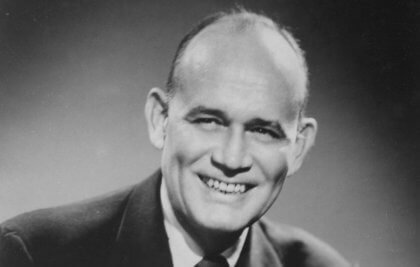



.jpg&ehk=IKw94Pg2RjbmA5tcSyLkdM46ilg4UrCO9prJeh7de7A%3d&risl=&pid=ImgRaw&r=0)

















